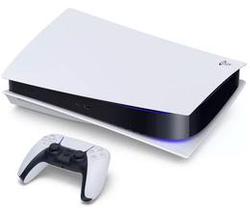PlayStation 5 Review: Buy Me If You Can
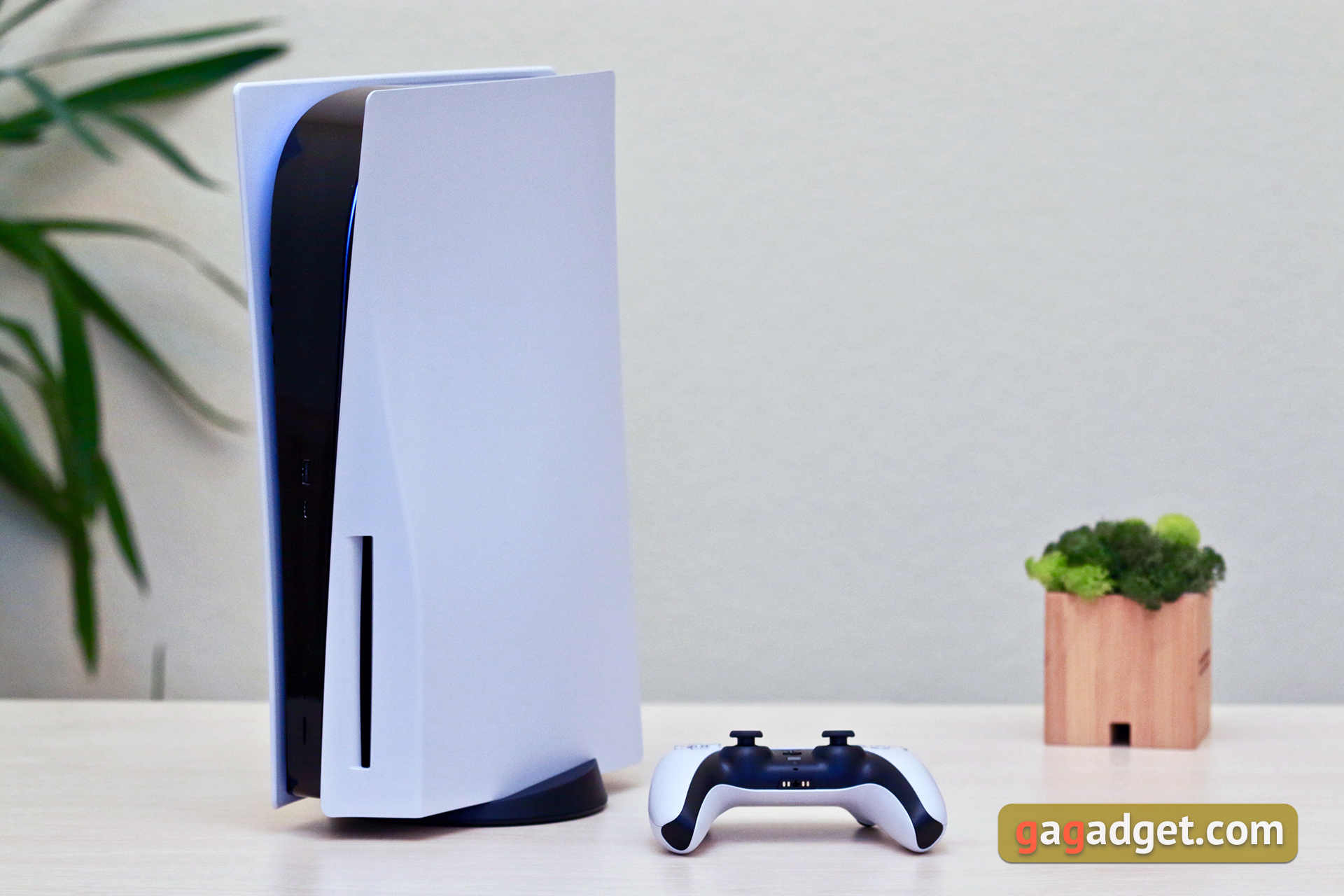
The PlayStation 5 is a great gaming console, and in this case it's not just about the trivial increase in graphics power. Yes, games in 4K resolution, frame rate up to 120 fps and ray tracing in real time - it's all cool. But if you compare it to the last generation, there are a lot more improvements and they touched almost all aspects of the so-called "user experience". PlayStation 5 boasts significantly reduced loading time ( and sometimes no loading time at all) thanks to an ultra-fast SSD. The DualSense gamepad really impresses with its updated tactile feedback and adaptive triggers. The cooling system is very quiet and efficient, and the redesigned console interface is very fast and has no lags whatsoever. And, of course, exclusive series of games, for which PlayStation has always been famous. Another nice thing to note is the backward compatibility with games of the previous generation. As for minor complaints, which are relevant at the moment and will be corrected in the future, it is worth highlighting just a couple. Some of the solutions in the new interface are not the most satisfying and the issue with the storage expansion, to which Sony has not yet given an answer. The main problem with the PlayStation 5 is that it's extremely difficult to find on sale. And the shortage will continue in the coming months.
You May Also Like: PlayStation 5 Accessories: How To Make Gaming More Comfortable
Pros:
- Games in resolutions up to 4K at up to 120 fps, support for ray tracing
- Comfortable DualSense gamepad with tons of new features
- Very fast SSD and minimized download time
- Quiet and efficient cooling system
- Backward compatibility with previous generation games
- Smart updated interface
Cons:
- Lack of possibility to expand the internal memory at the moment
What's in the Box?
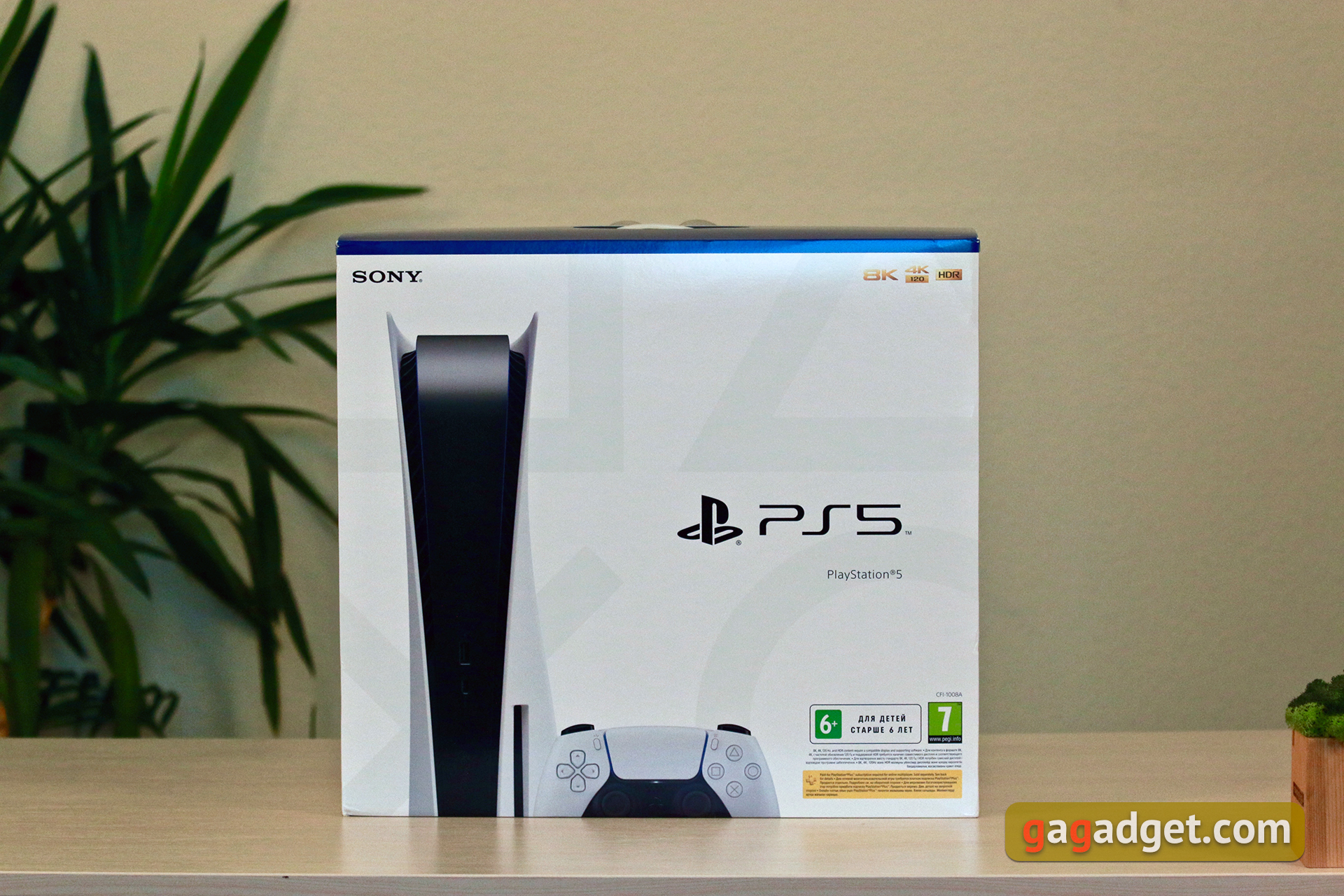
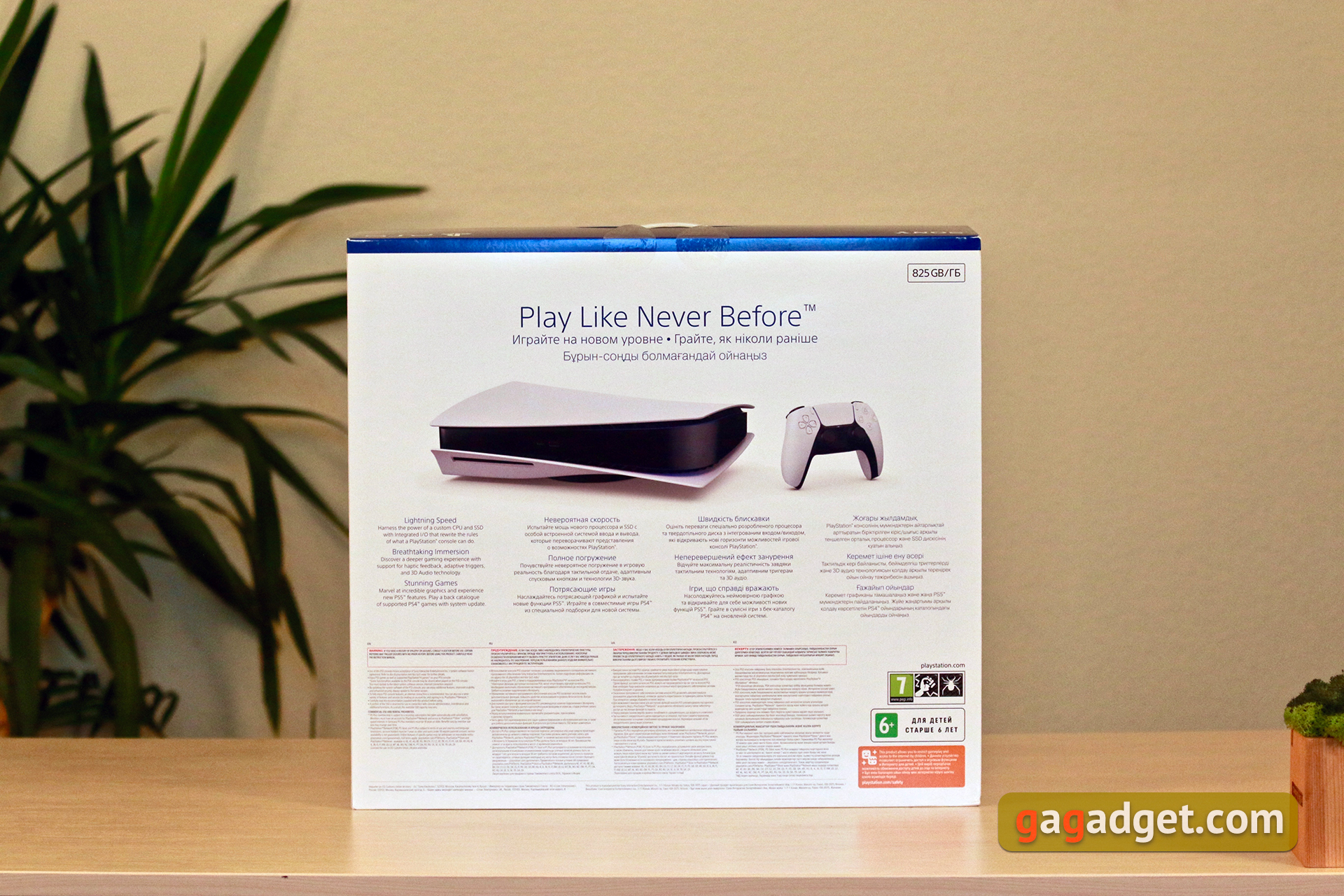
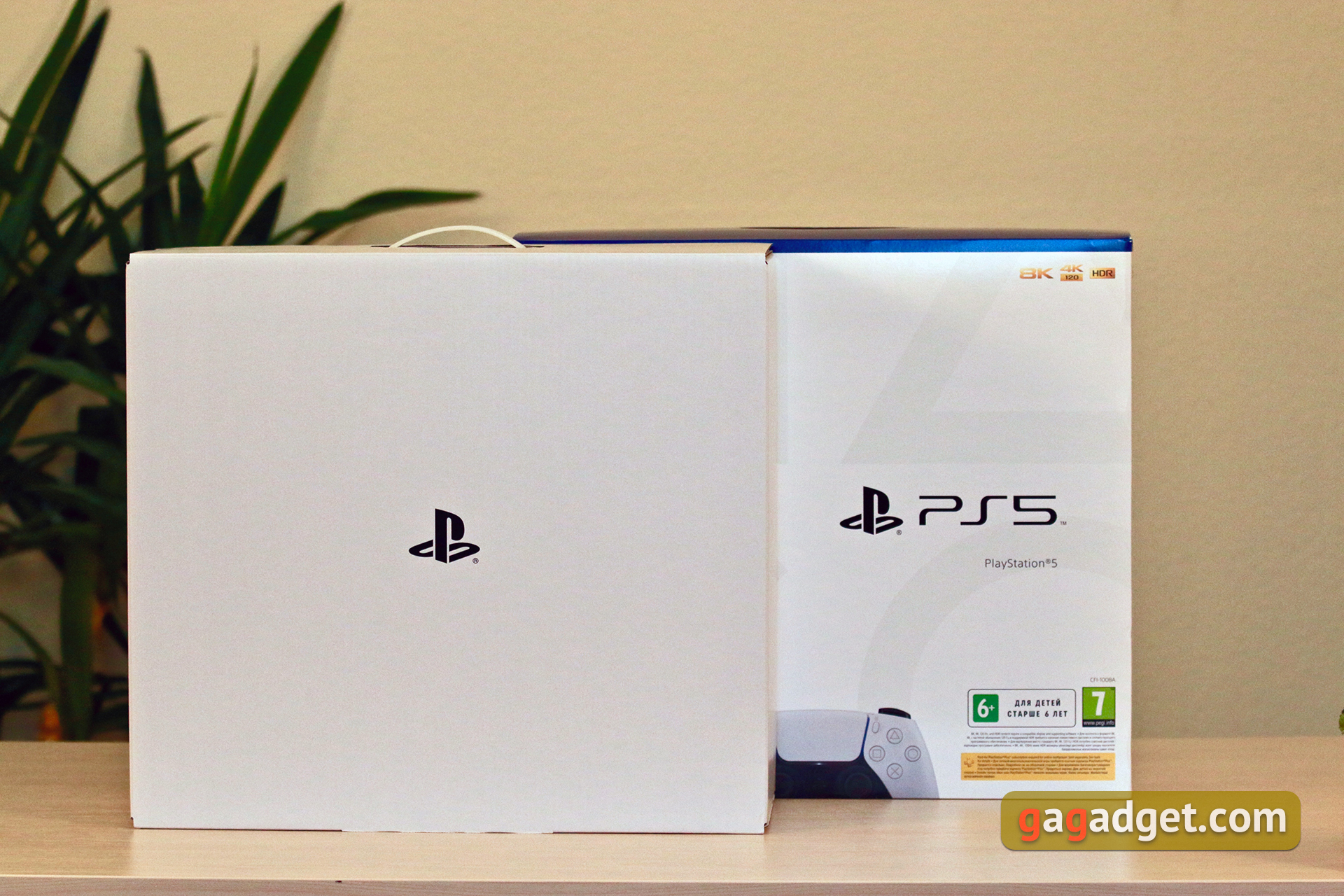
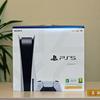


Unboxing a new game console is always a very exciting moment in which there is some magic, even if you are a bearded man in your 30s. The box with the PlayStation 5 is large and weighty. According to personal feelings, the volume is twice as large as the box from Sony PlayStation 4 Slim. The outer box-cover is made of soft cardboard, printed on it: the image of the console itself (almost 1: 1) and all the main features and advantages of the PS5 are described. Inside there is another box, simply white, but already made of thick cardboard. We open it.
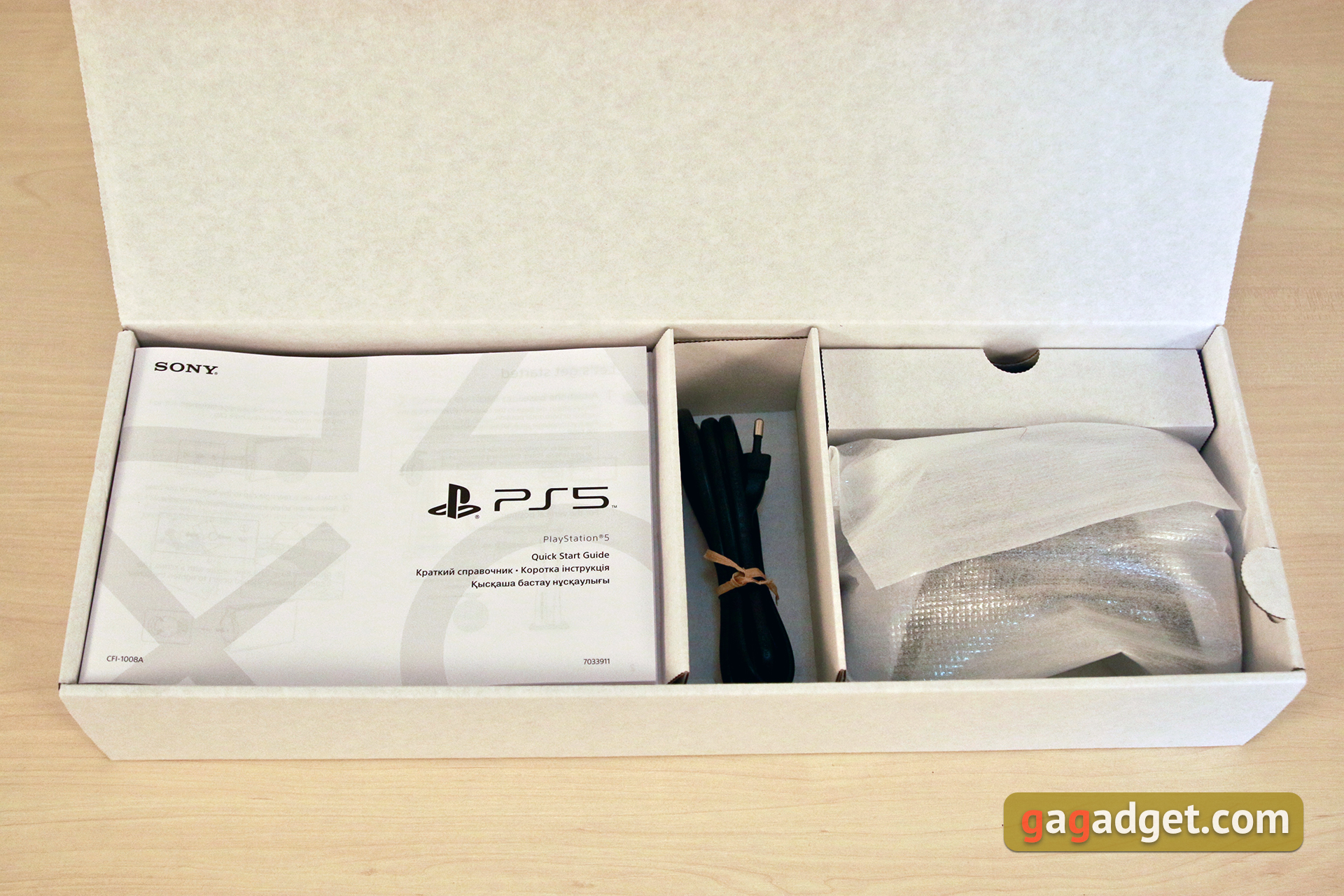
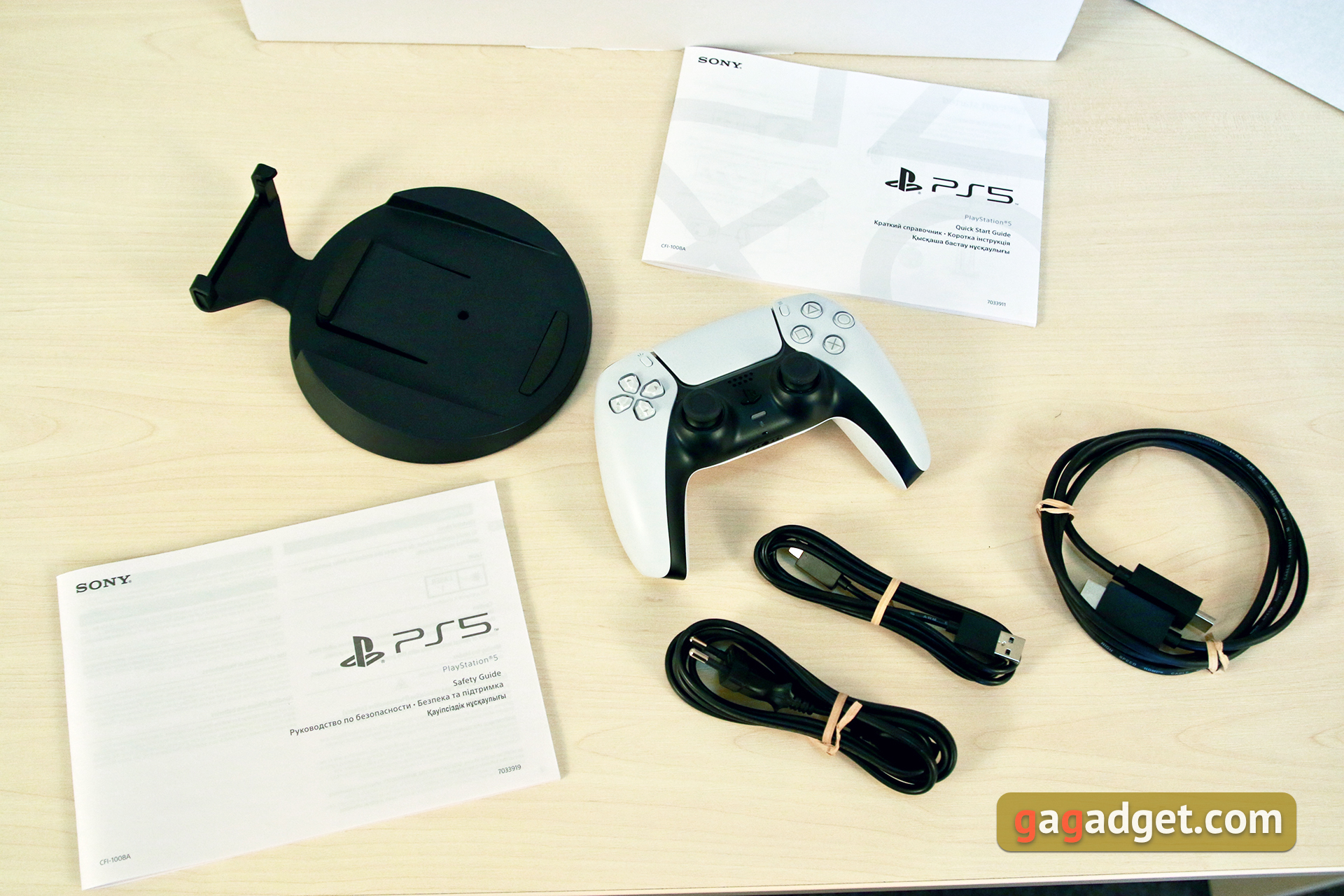


Above we find another smaller box containing all the accessories. DualSense gamepad, USB Type-C cable for charging it, power cable for the console itself, swivel stand with a screw for installing PlayStation 5 vertically or horizontally, HDMI 2.1 cable and documentation. The supplied cables are not too long. In real life only Type-C can cause discomfort if you charge the DualSense from the console while playing and sitting away from it. Now we go down under the box with accessories. There it is! PlayStation 5 itself is fixed with two cardboard trays and wrapped in soft plastic.

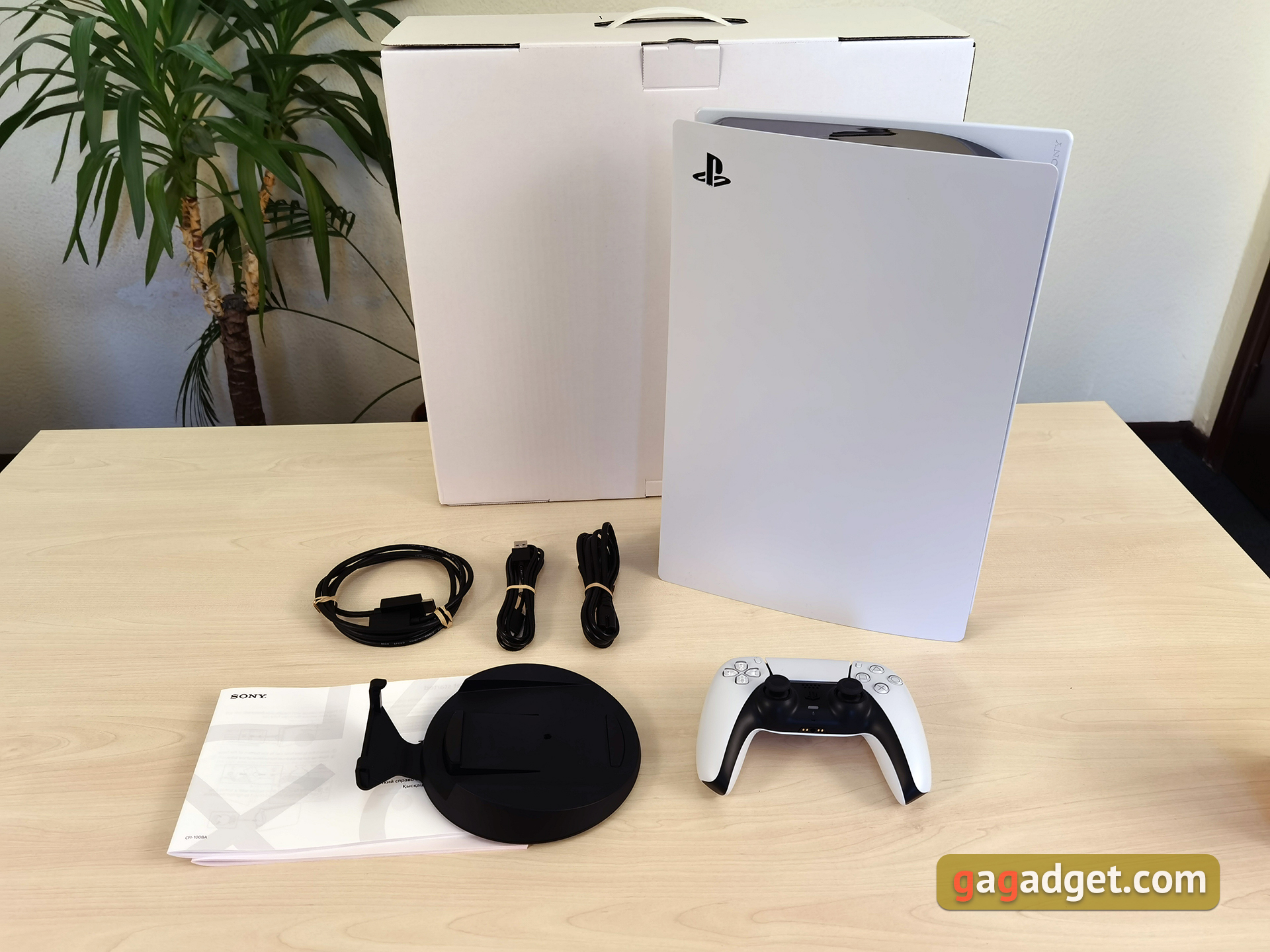

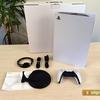
Sony's Next Generation Game Console Design

There was more than enough debate about both the appearance and the size of the PlayStation 5. I was impressed after the first presentation, and it looks even cooler in real life. The associations with alien ships remained. Why was this design chosen? Perhaps the company made a conscious decision to move away from the strict lines and standard black color of the previous generation. You may or may not like the console, but it immediately attracts attention.
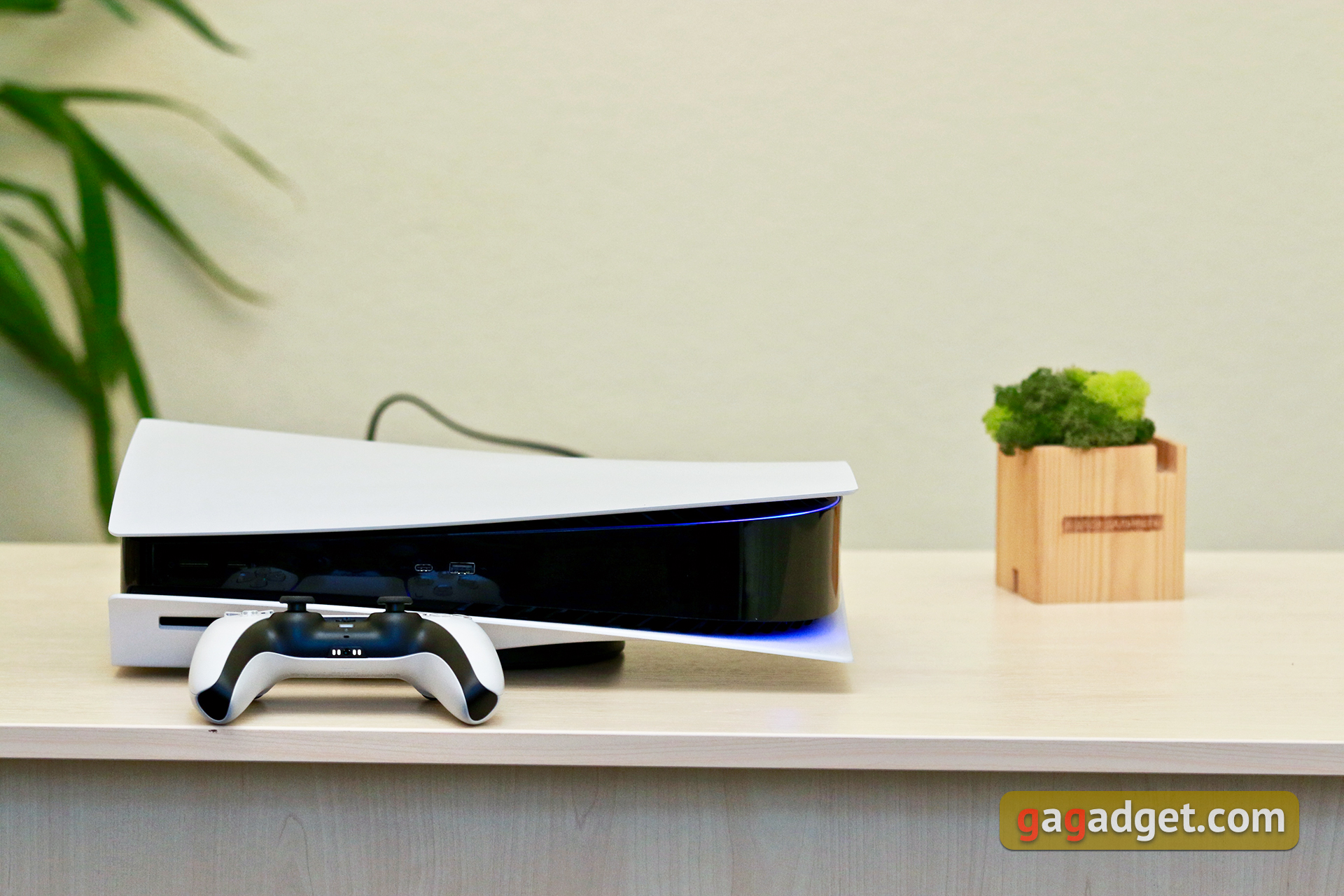
From a practical point of view, the new form has its own nuances. This also applies to the stand, and a couple of other things. The first one is the size, which is obvious: 39x26x10.4 cm. With this everything is very individual, depends solely on the available space next to the TV or in a cabinet under it. The PlayStation 5 can only be placed vertically on the side of the TV in most cases. Horizontally, however, there shouldn't be any problems: the shelves in TV cabinets will fit perfectly in width and height in most cases.
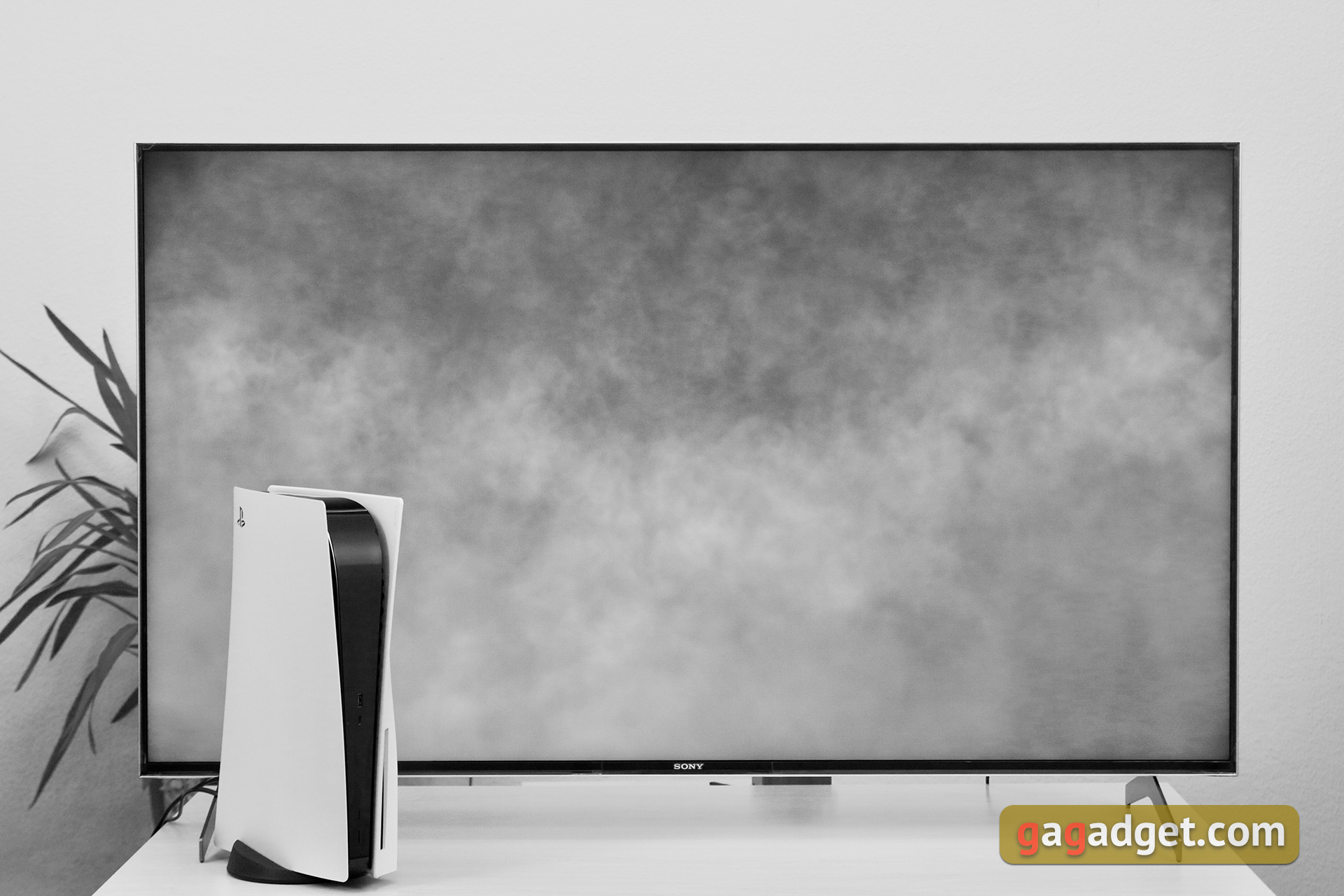
Structurally, the PlayStation 5 is a kind of "sandwich" of two white panels, with the black main part squeezed between them. The outer panels have unusual curves and are made of plastic with a matte finish on the outside and a texture in the form of branded crosses, circles, triangles and squares on the inside. In our disc version, these panels are also asymmetrical due to the presence of the optical drive.
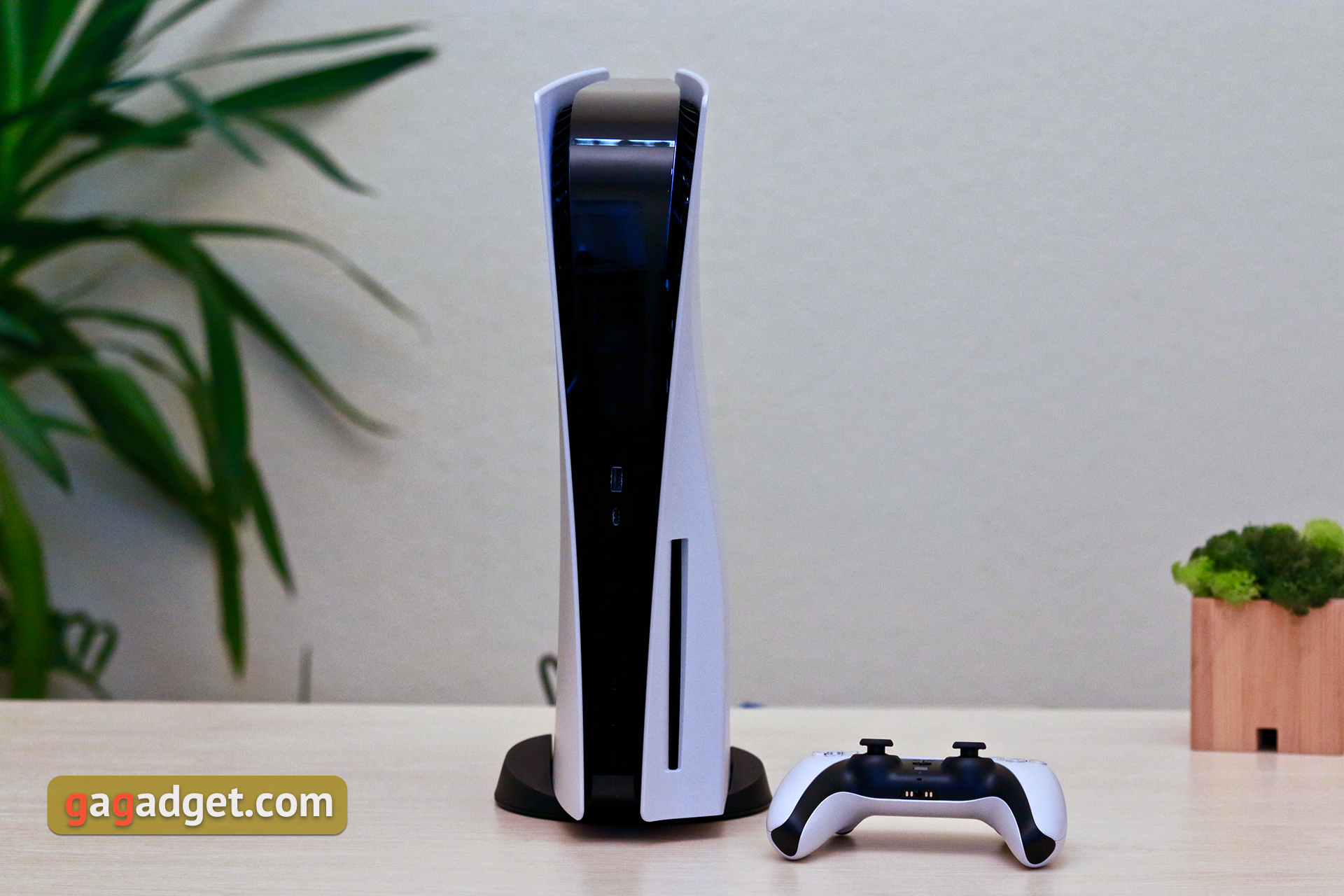
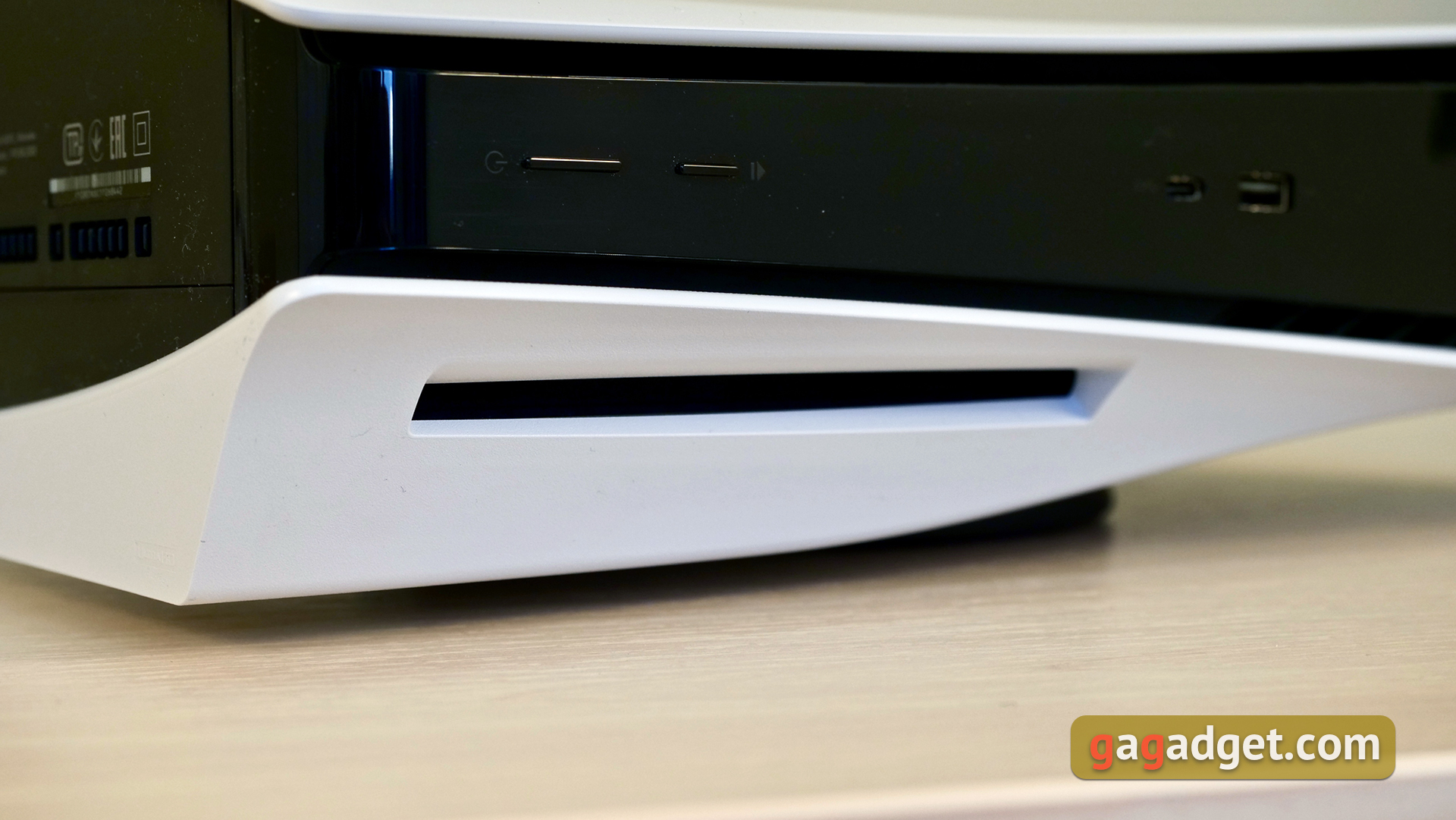
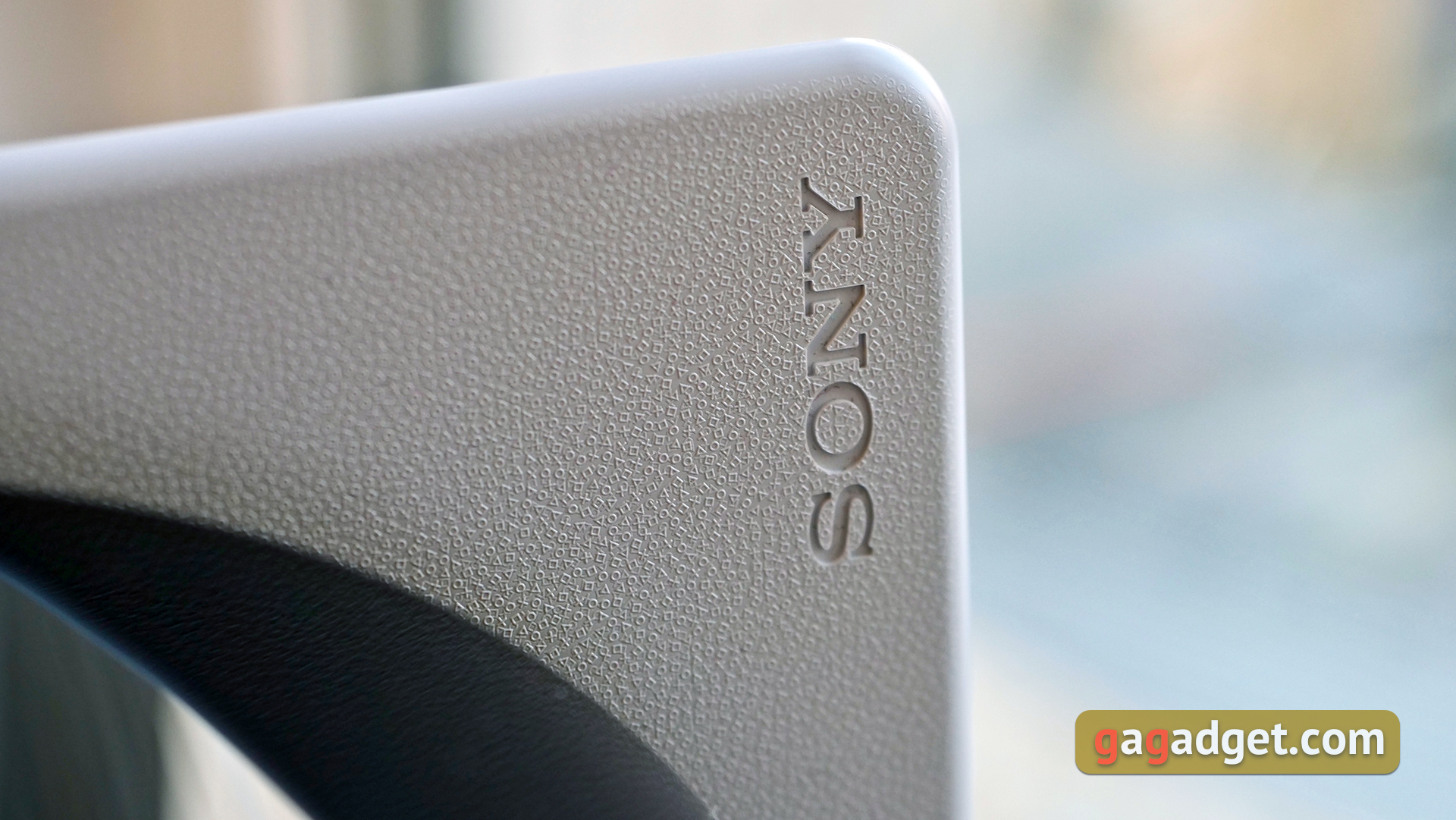
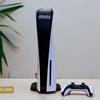

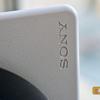
The inner part is made of black plastic. It is glossy and collects finger prints instantly. So either try not to touch it, or you have to wipe it constantly. Between the side panels and the black center, there are cold air vents and a rather calm but stylish backlight that glows in different colors depending on the current status of the console.
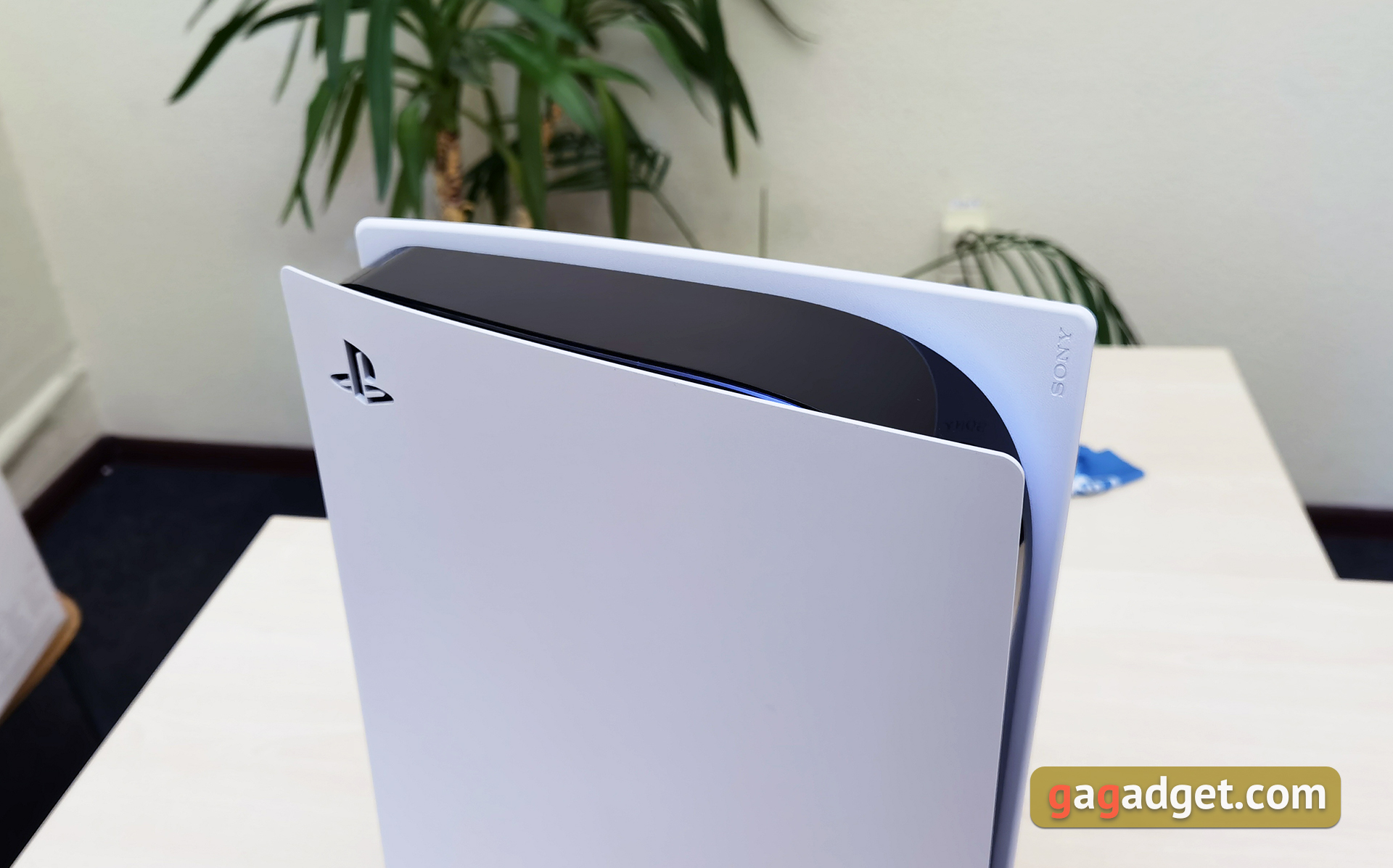
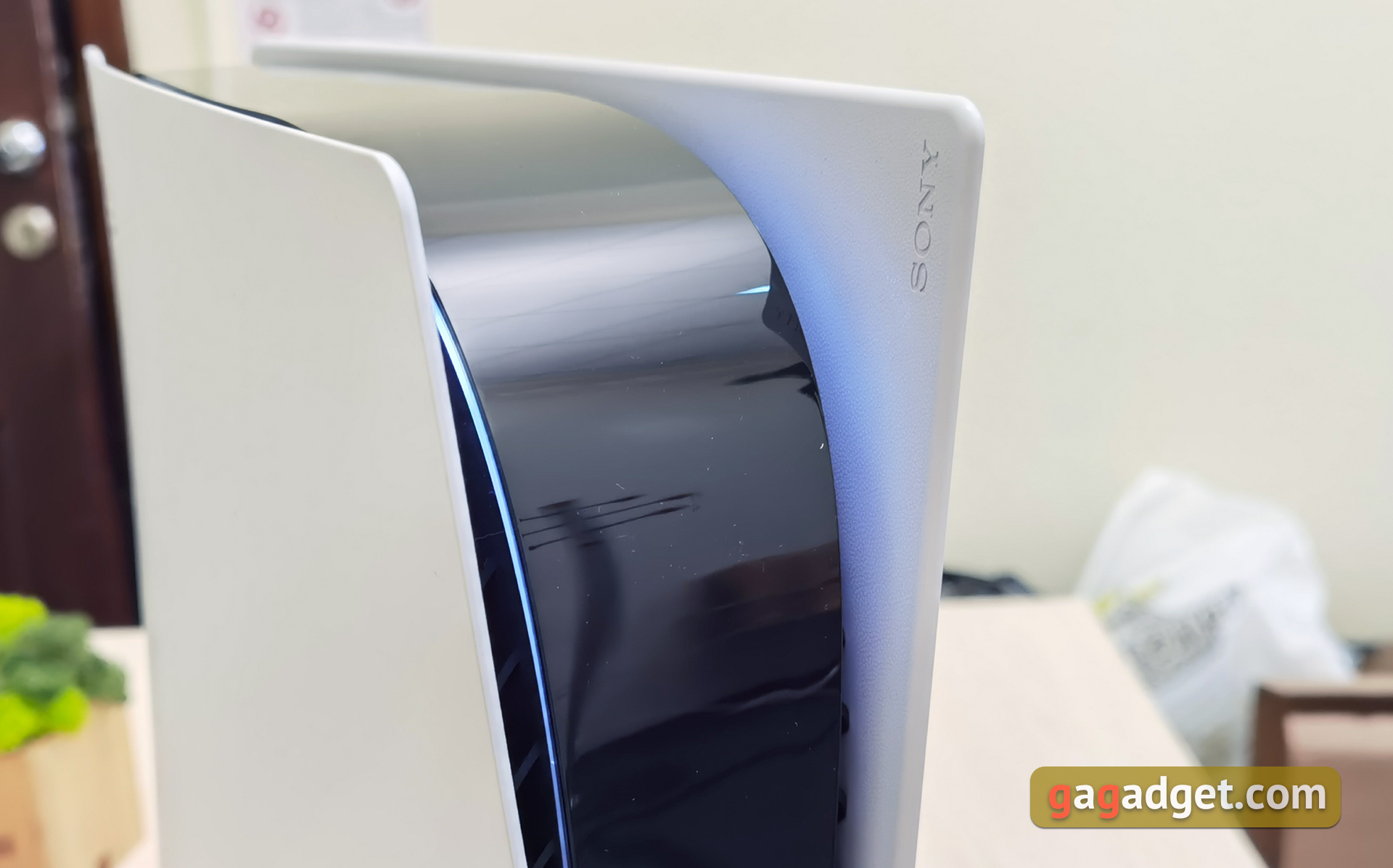
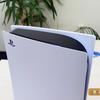
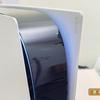
The stand offers two options for installing the console: vertical and horizontal. In this case, the stand itself must be scrolled until it clicks in the desired position. Inside the stand itself there is a hidden storage space for the fastening screw. For vertical installation on the bottom of the console, you need to pull out the plug, set the stand in the correct position and screw it in with the fixing screw.
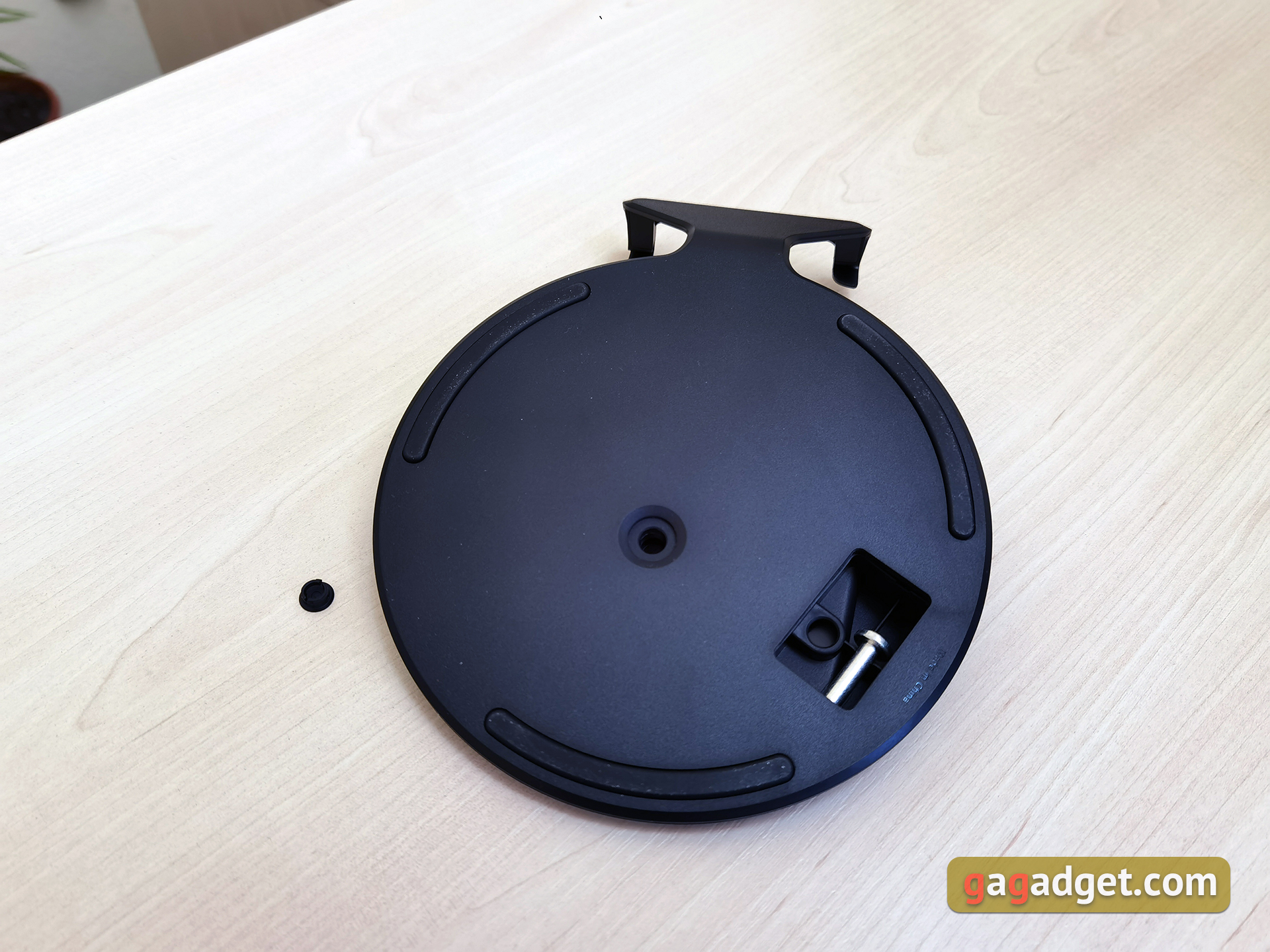
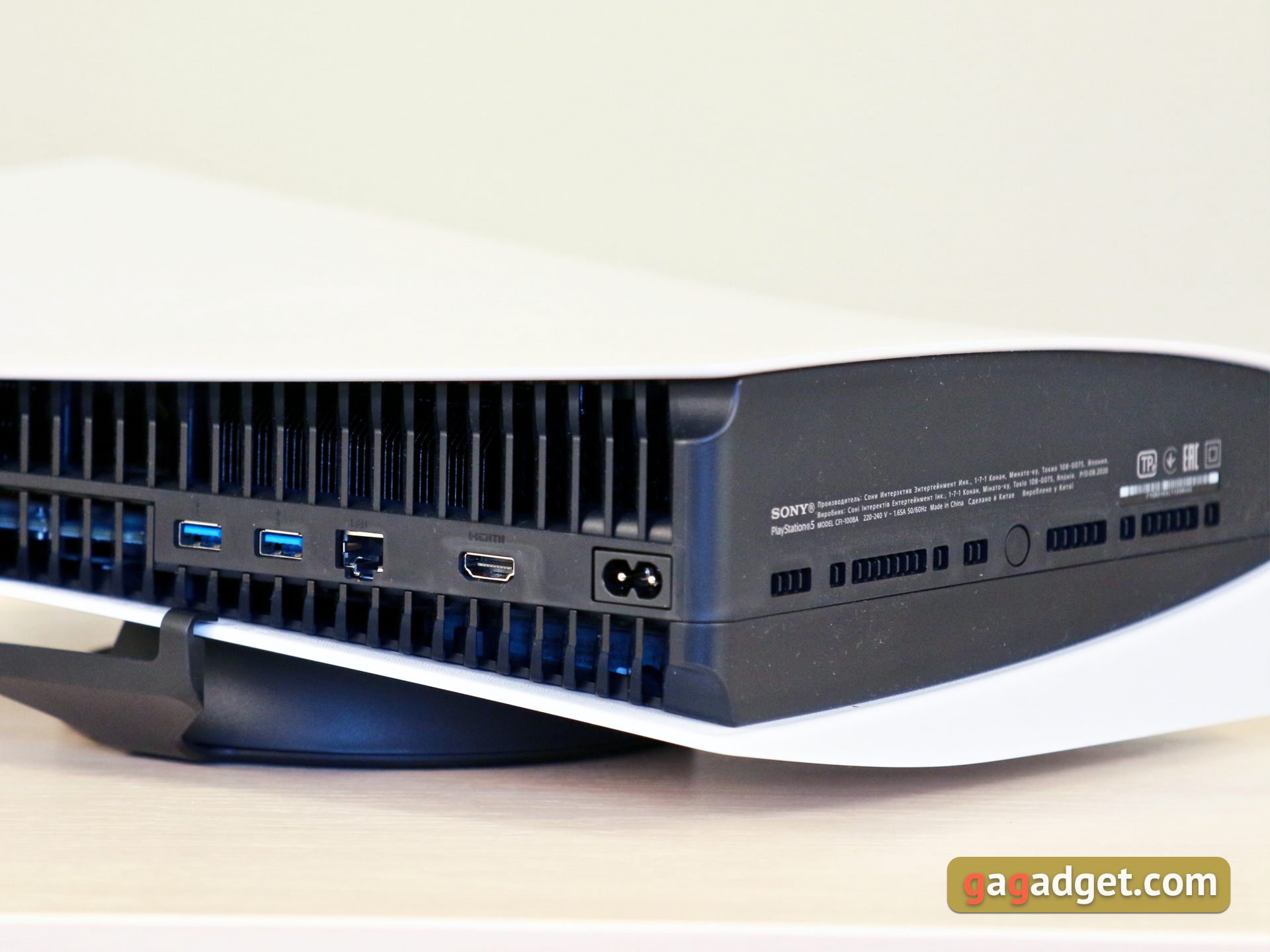
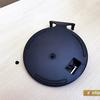

Everything is simpler horizontally. Scroll through the stand and attach it to the white panel in the place marked with the same PlayStation branding symbols.
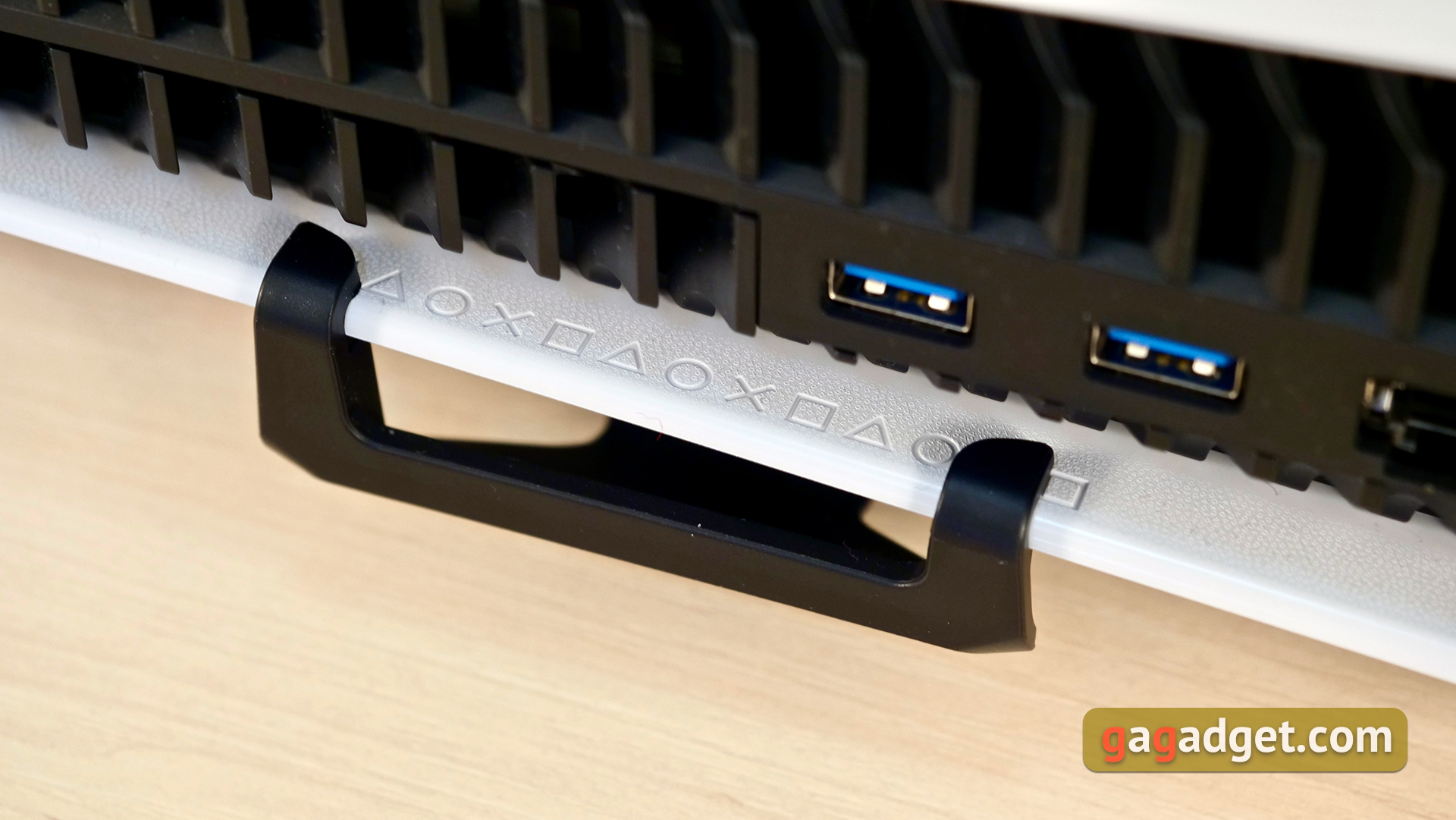
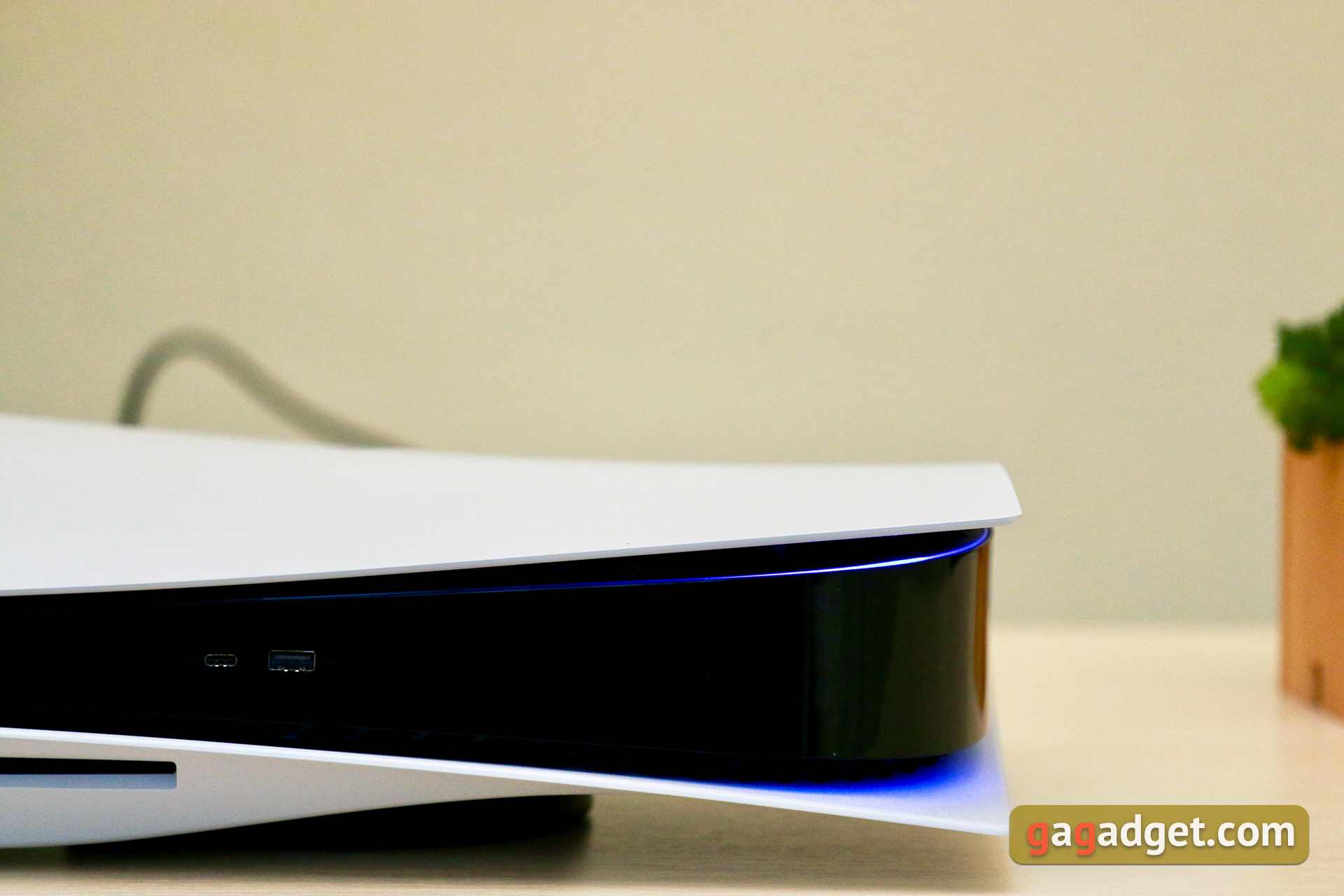
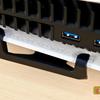
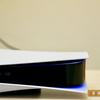
On the front of the case there are two buttons: Power and Eject, as well as USB Type-A connectors of the USB 2.0 standard and USB Type-C of the USB 3.2 Gen 2 standard.
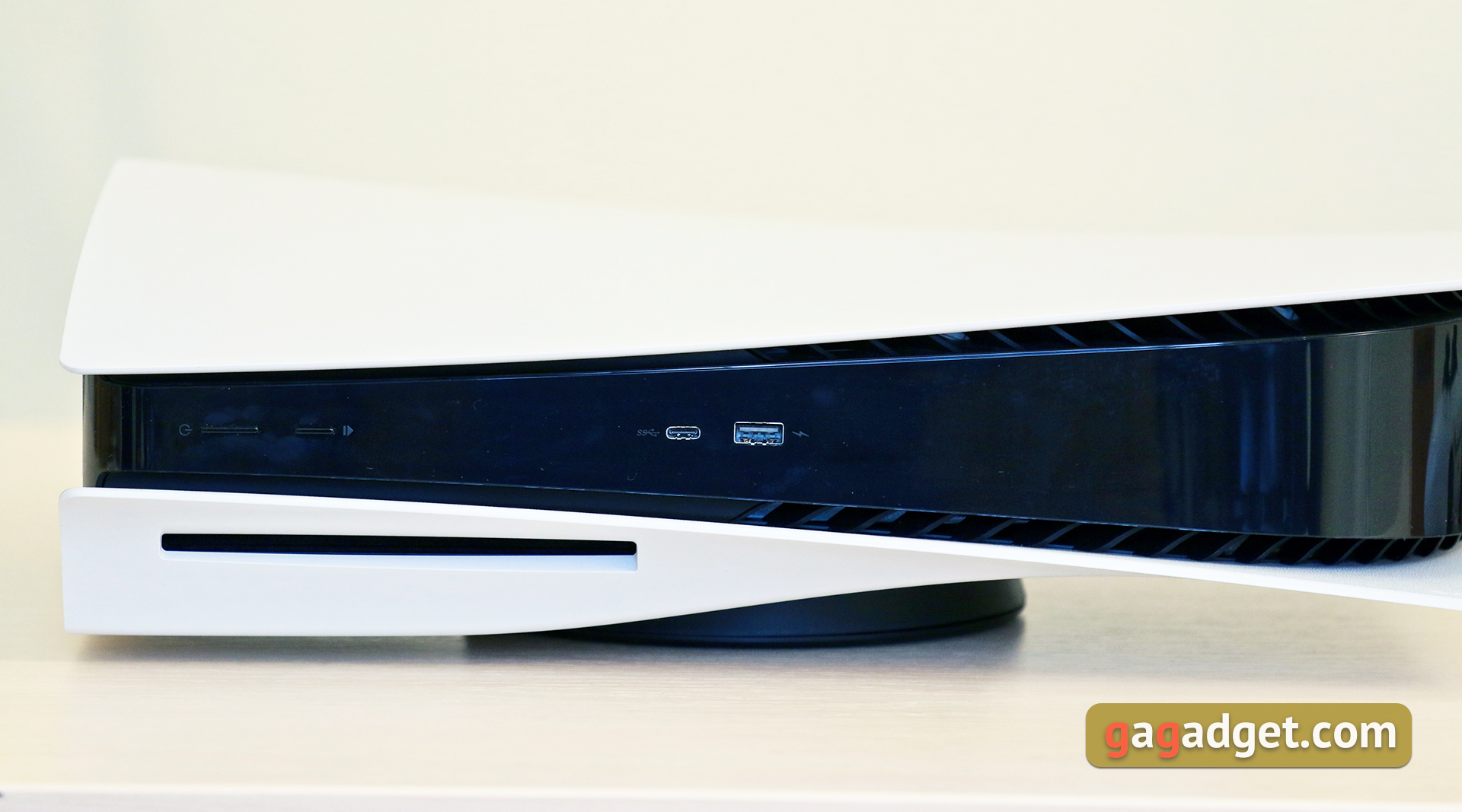
On the back there are ventilation holes, two USB Type-A connectors of the USB 3.2 Gen 2 standard, a gigabit LAN port, an HDMI 2.1 output, a power connector and a Kensington Lock socket.
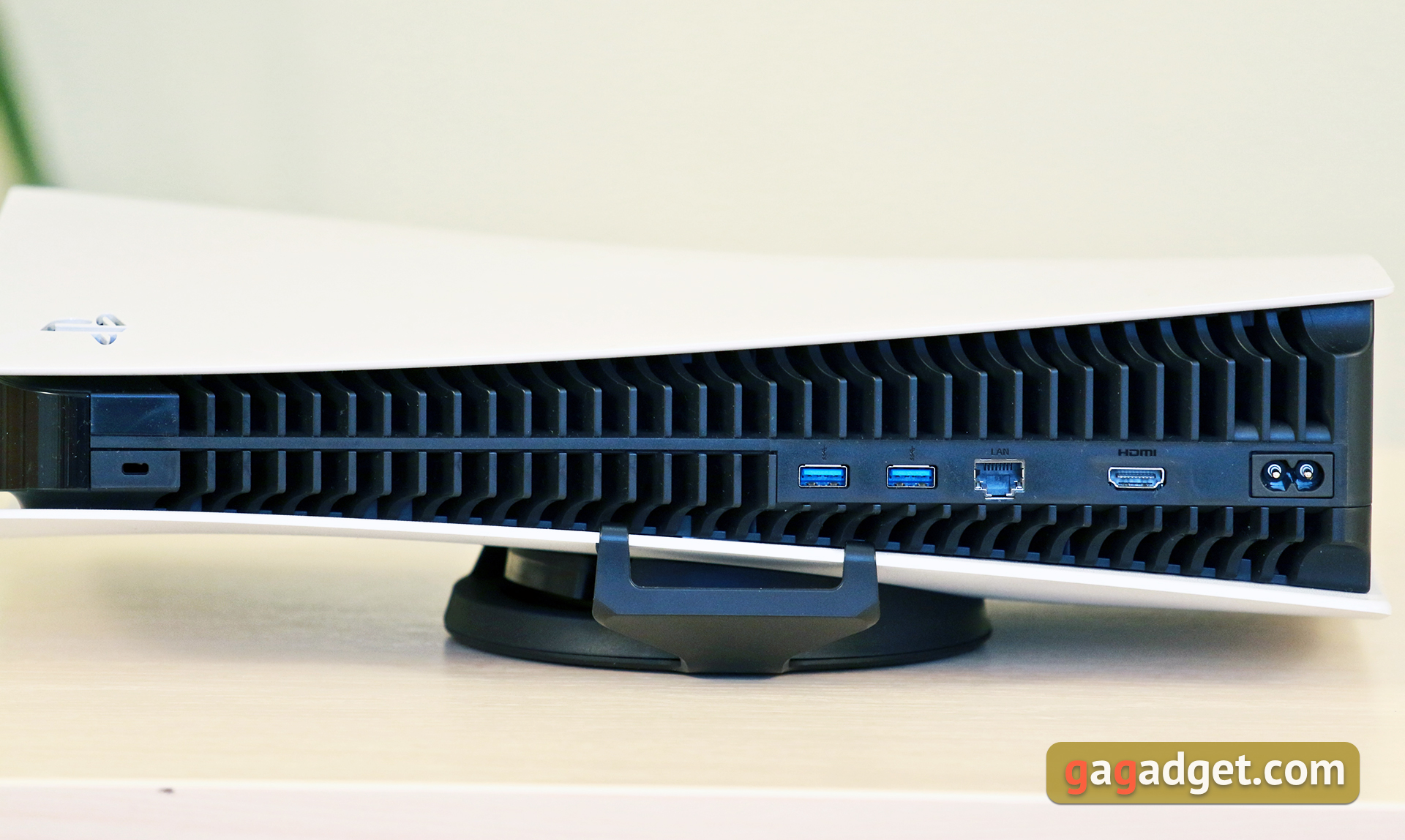
Now let's see what's under the covers. They are secured with simple latches and can be removed without any problem or voiding the warranty. This is quite legal. Apparently, over time, the company will start to produce replacement panels in other colors and/or patterns. Under the cover there is a cooler, a lot of screws and a couple of big holes. These are the so called dust collectors. You can use a vacuum cleaner to remove dust from the cooling system.
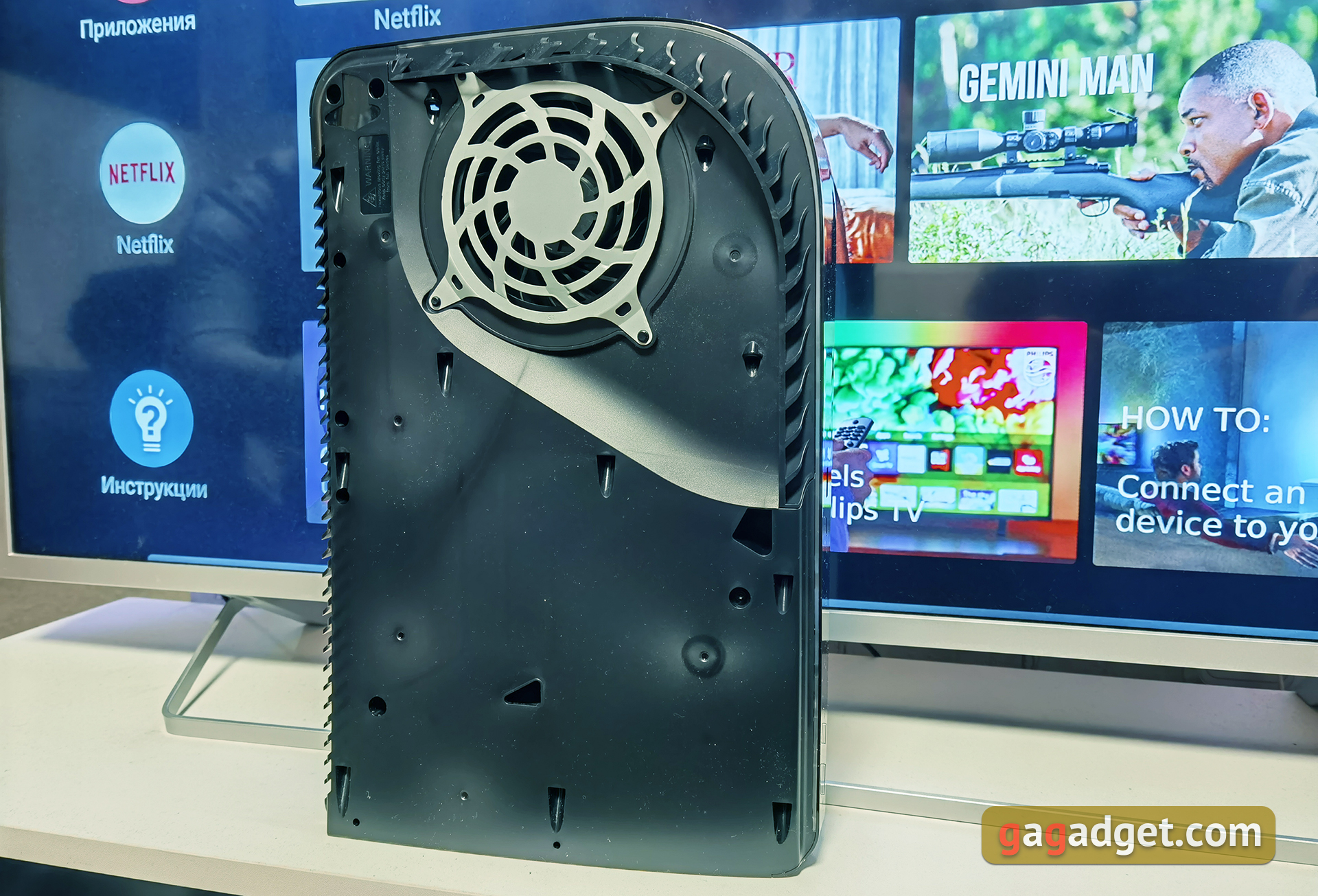
On the other hand, the picture is a little more interesting. The optical drive is visible and another metal cover is slightly higher. This is the M.2 SSD connector. It is physically possible to install any standard size. But so far this slot is not used: PS5 does not yet support memory expansion. Of course, it will appear in the future, but there is no timetable yet.

And this is how PlayStation 5 looks like in the company of its relatives: Sony PlayStation 4 Slim, PlayStation 3 Slim, PlayStation 2 and PlayStation Classic. You can more clearly assess the dimensions.
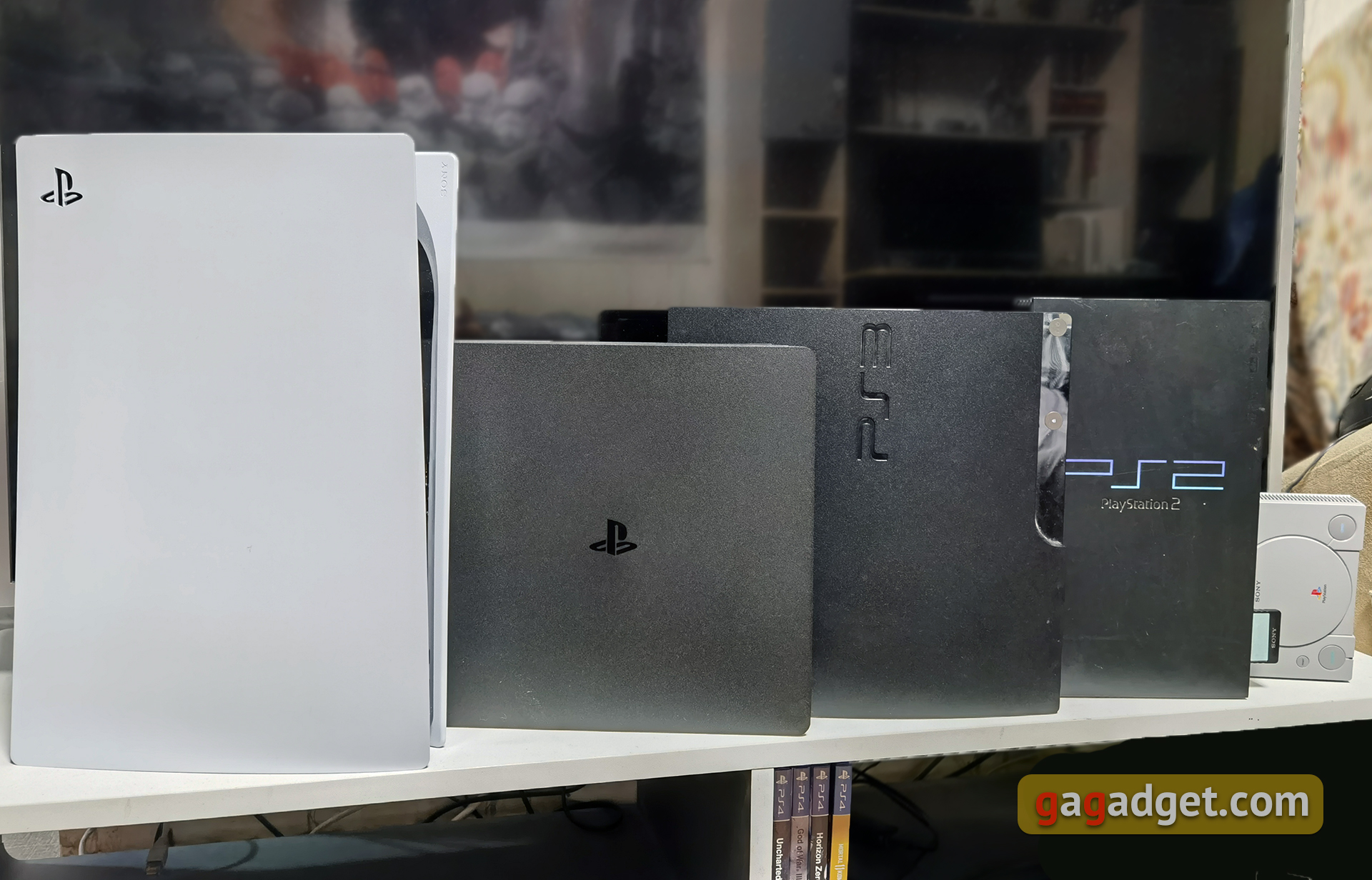
Is DualSense Gamepad that Good?

The updated gamepad is not called DualShock 5, but renamed to DualSense. And this is a logical decision: there are a lot of changes compared to the previous generation. The dimensions, weight, shape and (most importantly) the possibilities of the gamepad have changed. Visually, we can feel the similarity with DualShock 4, but DualSense turned out to be larger and heavier. All the basic control buttons are in their places, so you won't have to get used to them for a long time. The gamepad itself is made of black and white plastic with different textures. The texture of the handles was especially surprising. If you look closer, you can see that they are covered with very small PlayStation symbols: circle, square, triangle and cross:
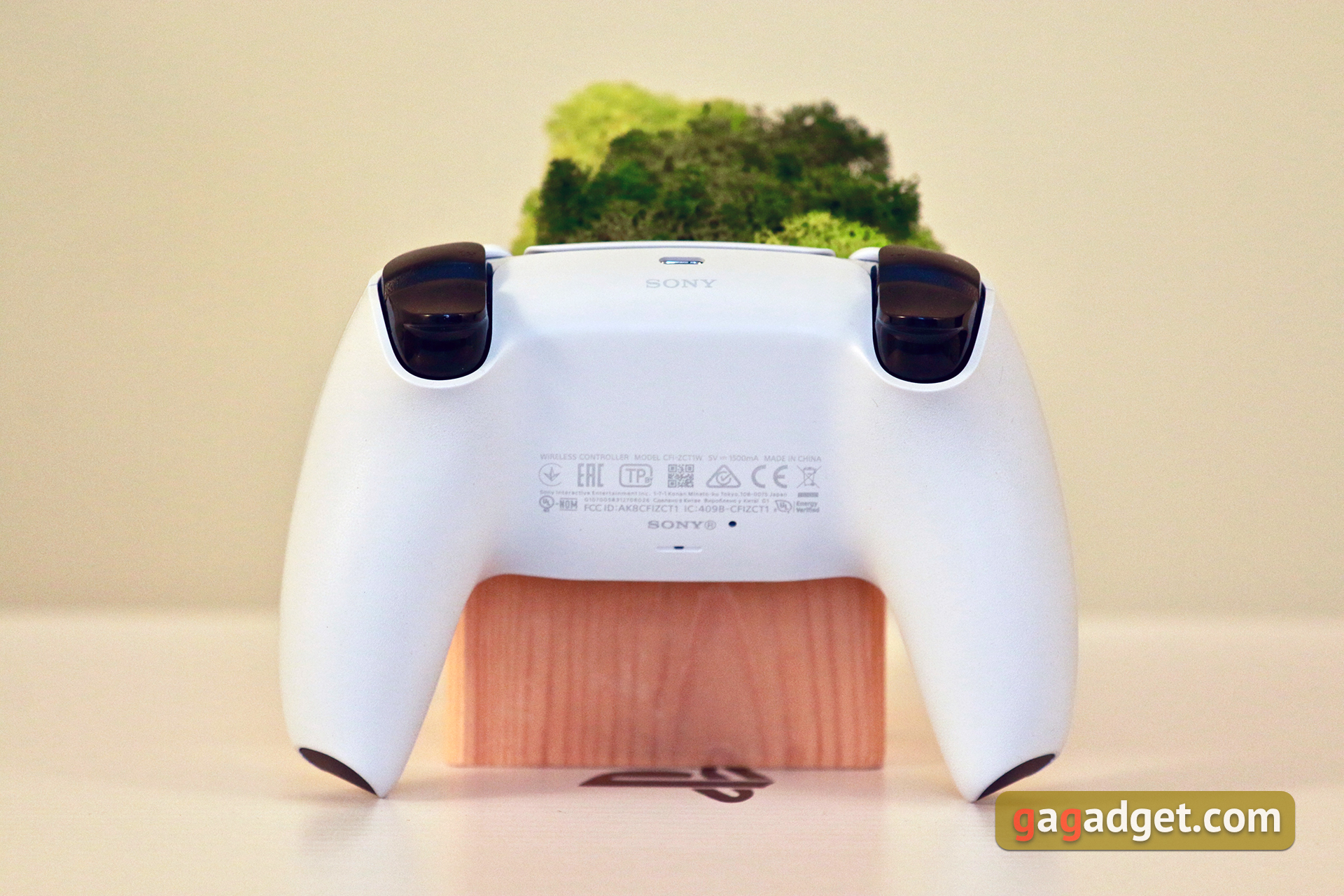
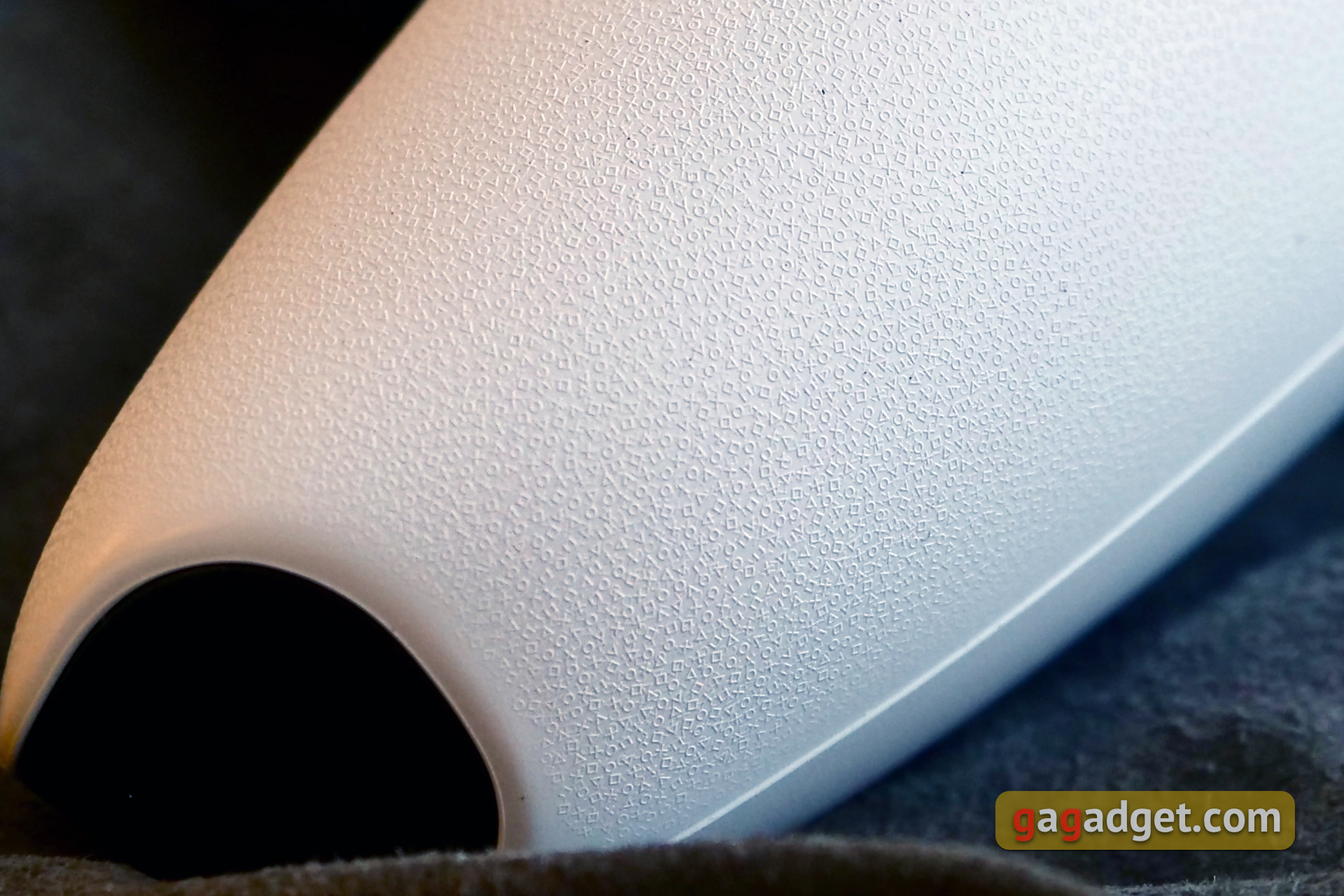


Speaking of the main buttons. They are now made of transparent plastic, and the markings are printed inside. At the same time, the circle, square, triangle and cross are no longer colored, but the same gray color. So are the markings on the D-Pad. The D-Pad buttons, in my personal experience, are a little tighter than in the DualShock 4, but it's comfortable to use, I had no problems. The analog sticks retained their design, but the perimeter bezel became more textured and clear, which I think is a bonus.
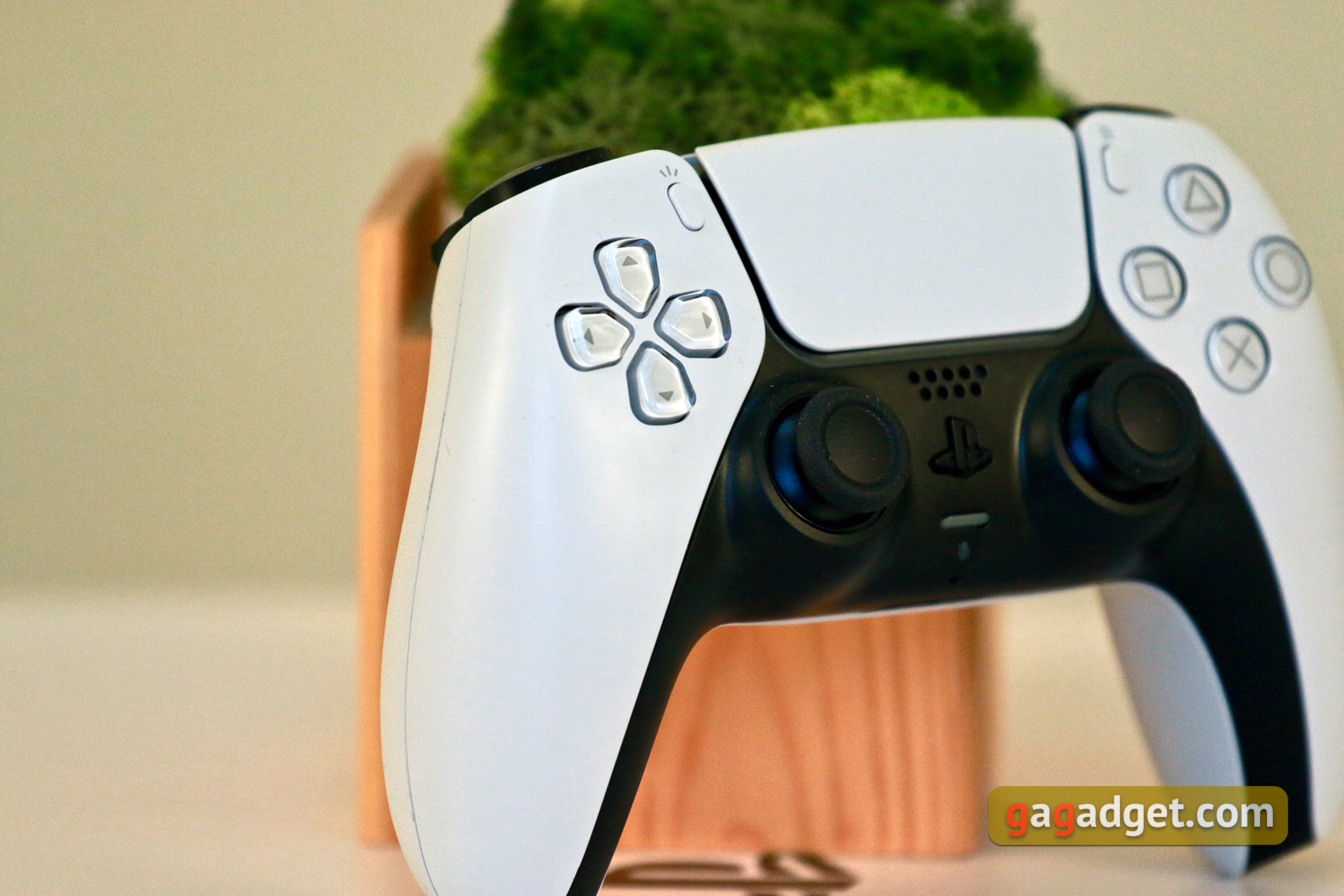
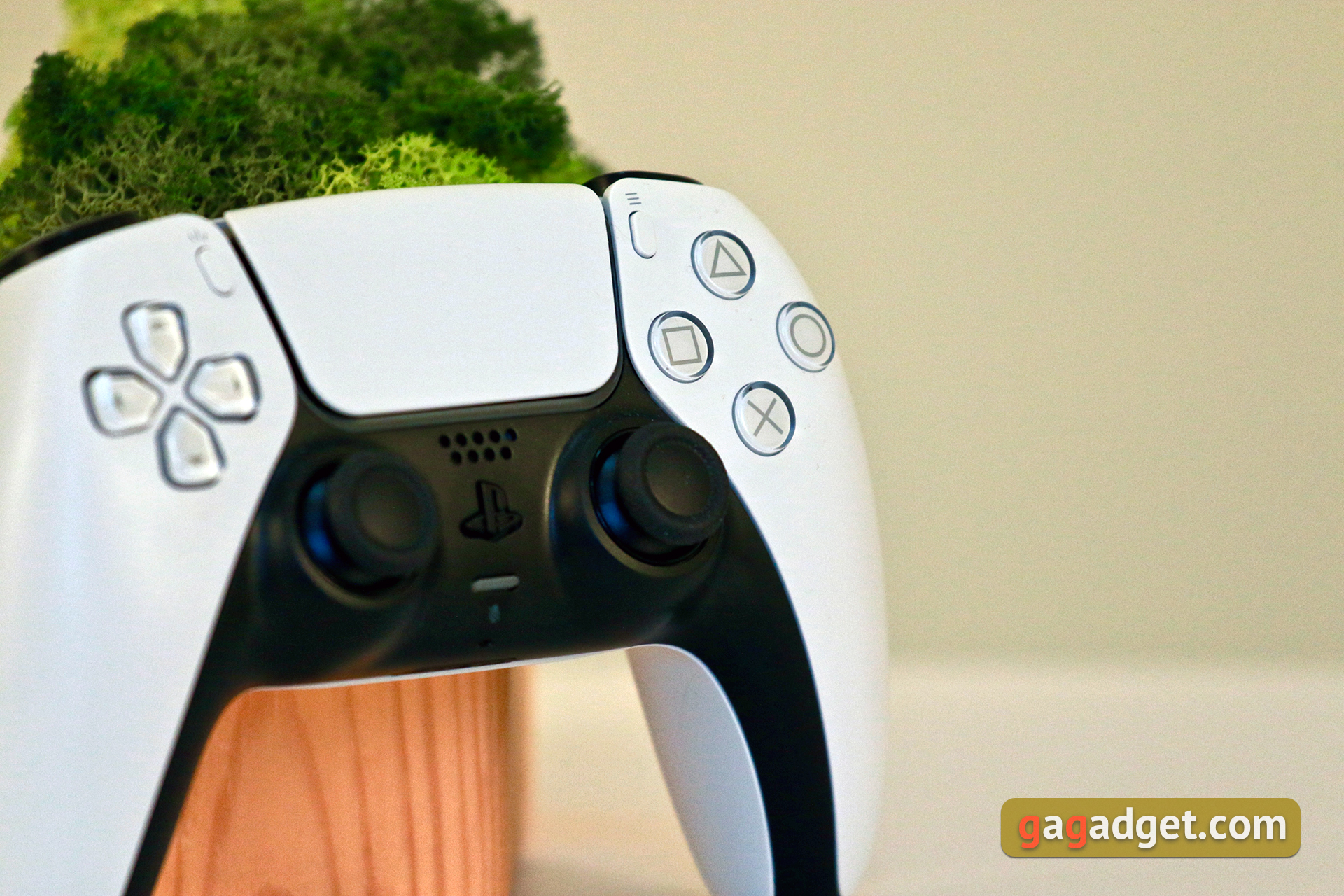
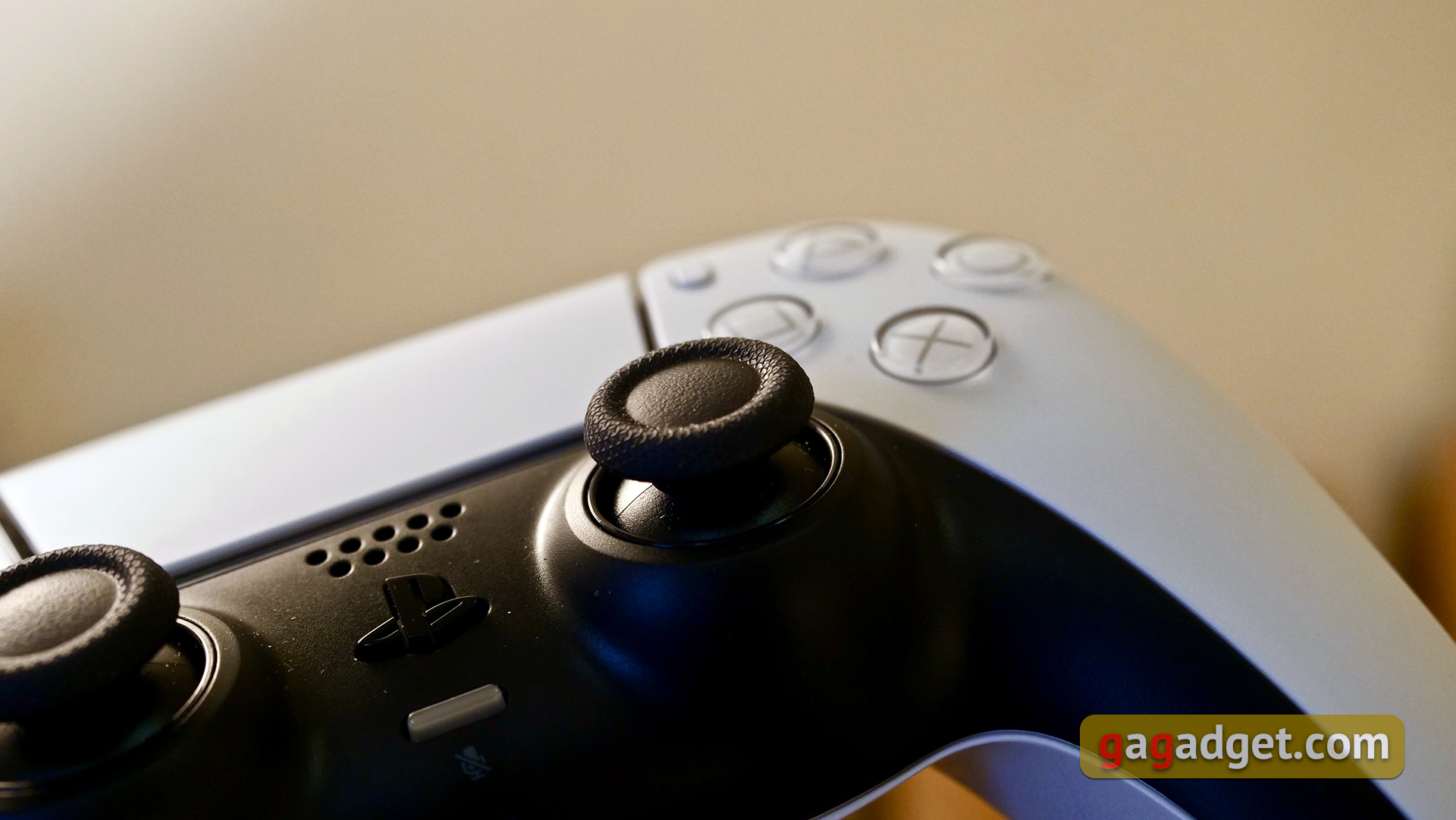
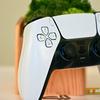


The speaker, the microphone, the mute button, and the PlayStation button are placed between the sticks. It is no longer round, but has the shape of the PlayStation logo. On the back there is another microphone and a hole with the Reset button. As before, the gamepad is powered by a built-in battery. But the USB Type-C connector is used for charging. The touchpad was also slightly redesigned: now it has a little trapezoidal shape. And the backlight is now placed around the perimeter of the panel. Now it's not as bright. On the sides of the touch panel there are Options and Create buttons, which are responsible for calling up the menu and taking screenshots/video clips respectively.
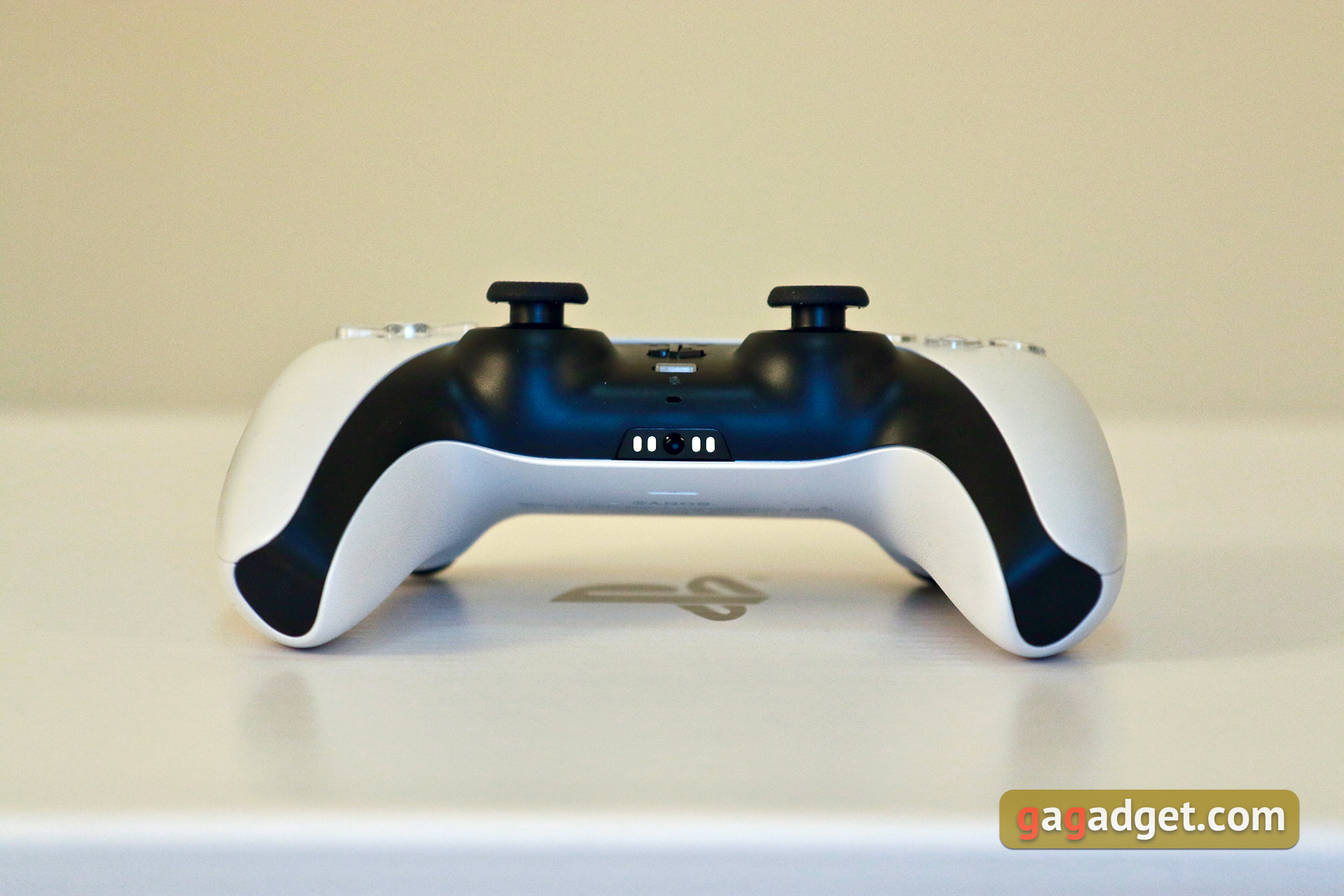
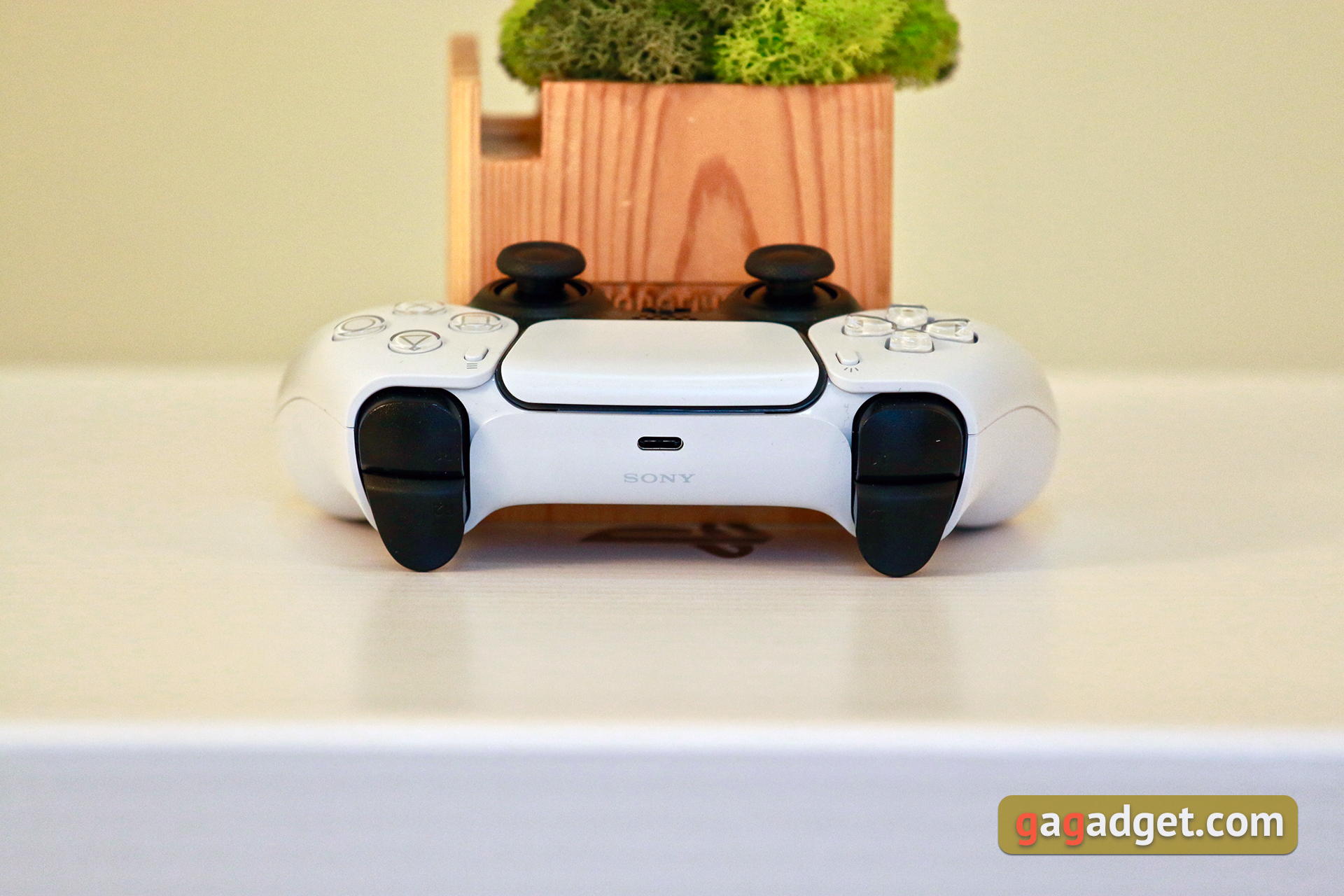


The new DualSense weighs 284 g versus 210 g for the DualShock 4. The difference is quite impressive, and you can feel it the first time you use it. But the addiction happens very quickly. The shape seemed to me more comfortable than its predecessor thanks to the more gripping handles. I had no complaints about the build quality. I have had an OEM gamepad (complete) from PS4 for more than 2 years. There is hope that DualSense will survive as well.
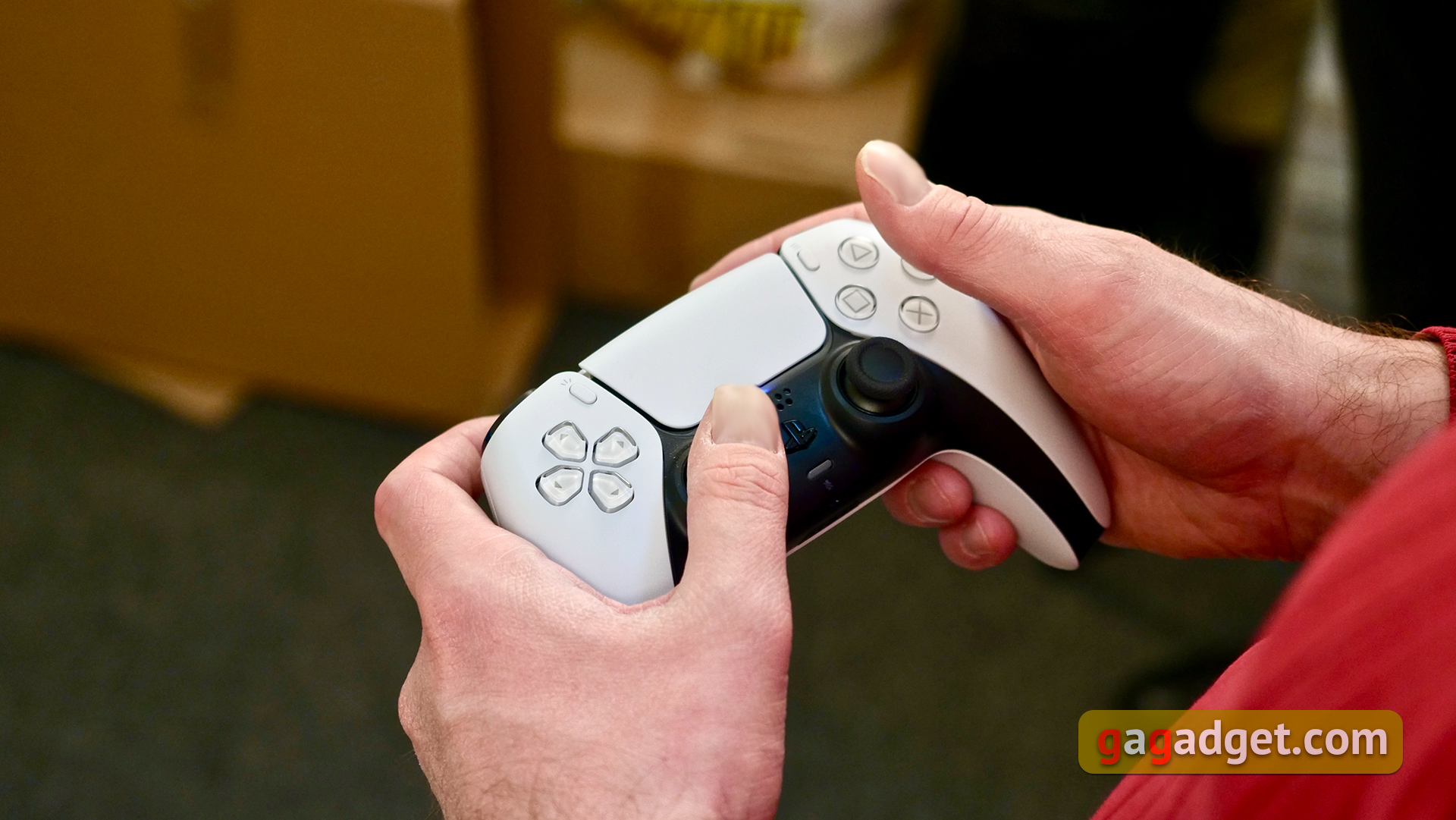
Now let's move on to the main features of the gamepad: the renewed Haptic Feedback vibration system and the adaptive triggers R2 and L2. Vibration in DualSense is implemented by two separate actuators and has a lot of features. They can work independently of each other, which allows you to implement a lot of effects, up to the fact that the hands feel every step of the character by vibration on the appropriate side. The specifics of surfaces, grass, falling, sliding, touching surfaces, blows, shots, recoil, and so on are conveyed believably. It feels very cool: when you "feel" with your hands the surface you are driving on in a car, sleepers when you are moving in a train. At the same time, in some cases (where it is necessary) you can feel the direction of travel. This is all usually accompanied by sound effects from the dynamics of the gamepad for even more vivid sensations.
The second important innovation is the adaptive triggers R2 and L2. They know how to change the strength of resistance and simulate different events and actions in the game. For example, the bowstring tension, pulling the trigger of various firearms, accelerating a car, and so on. And don't forget that DualSense also detects movement. To demonstrate all of these DualSense capabilities, the PS5 comes preloaded with a little game called Astro's Playroom, which makes the most of this impressive variety of technology, motors and sensors. Some game developers have already started using these features. In particular there is a trigger feel in Call of Duty: Black Ops Cold War, gas pedal and different road surfaces in Dirt 5, player fatigue simulation in NBA 2K21, difficulty aiming in Watch Dogs: Legion and so on. The only important question that remains is how actively developers will continue to use DualSense capabilities. And while Sony's internal studios will clearly bother, multiplatform developers are doubtful.
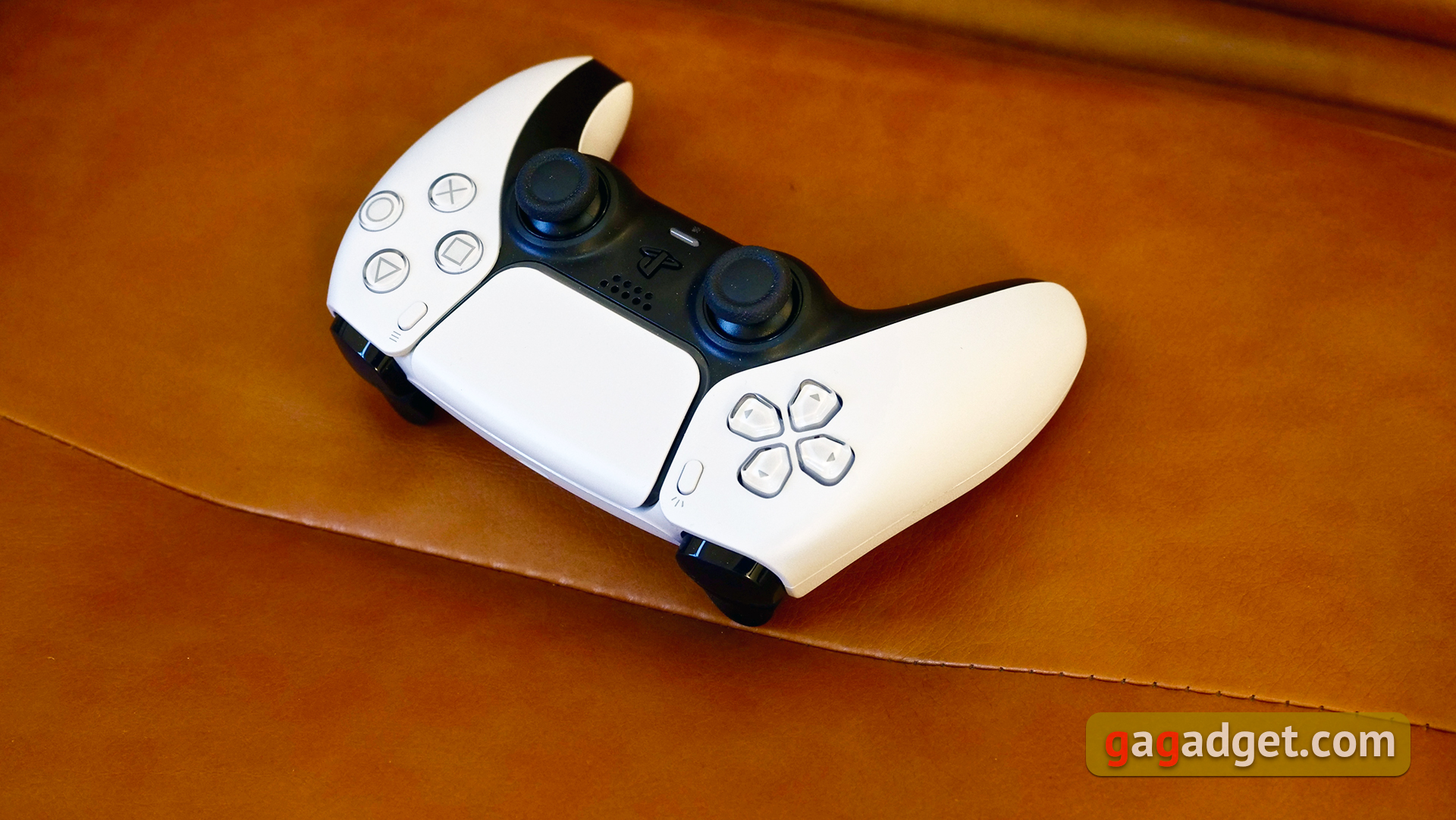
DualSense is powered by a built-in 1560 mAh battery, charged via Type-C cable, or by the proprietary charging dock. When it comes to battery life, it's hard to say for sure: it all depends on how actively the game uses Haptic Feedback, adaptive triggers, and the speaker. My personal feeling is that 8-10 hours is quite realistic. But Astro's Playroom will definitely drain the battery faster. DualSense is compatible not only with PS5: there is support for computers (Steam has already officially added support, including touchpad, gyroscope and haptic feedback), as well as smartphones on Android and iOS. Notably, the PS4 does not support it. Although I think this is temporary and with updates will be corrected.
You May Also Like: PlayStation 5 Accessories: How To Make Gaming More Comfortable
Cosmic Red  |
PlayStation 5 Dualsense Cosmic Red
|
Check Price |
Midnight Black  |
PlayStation 5 Dualsense Midnight Black
|
Check Price |
What's Hiding Inside PlayStation 5?
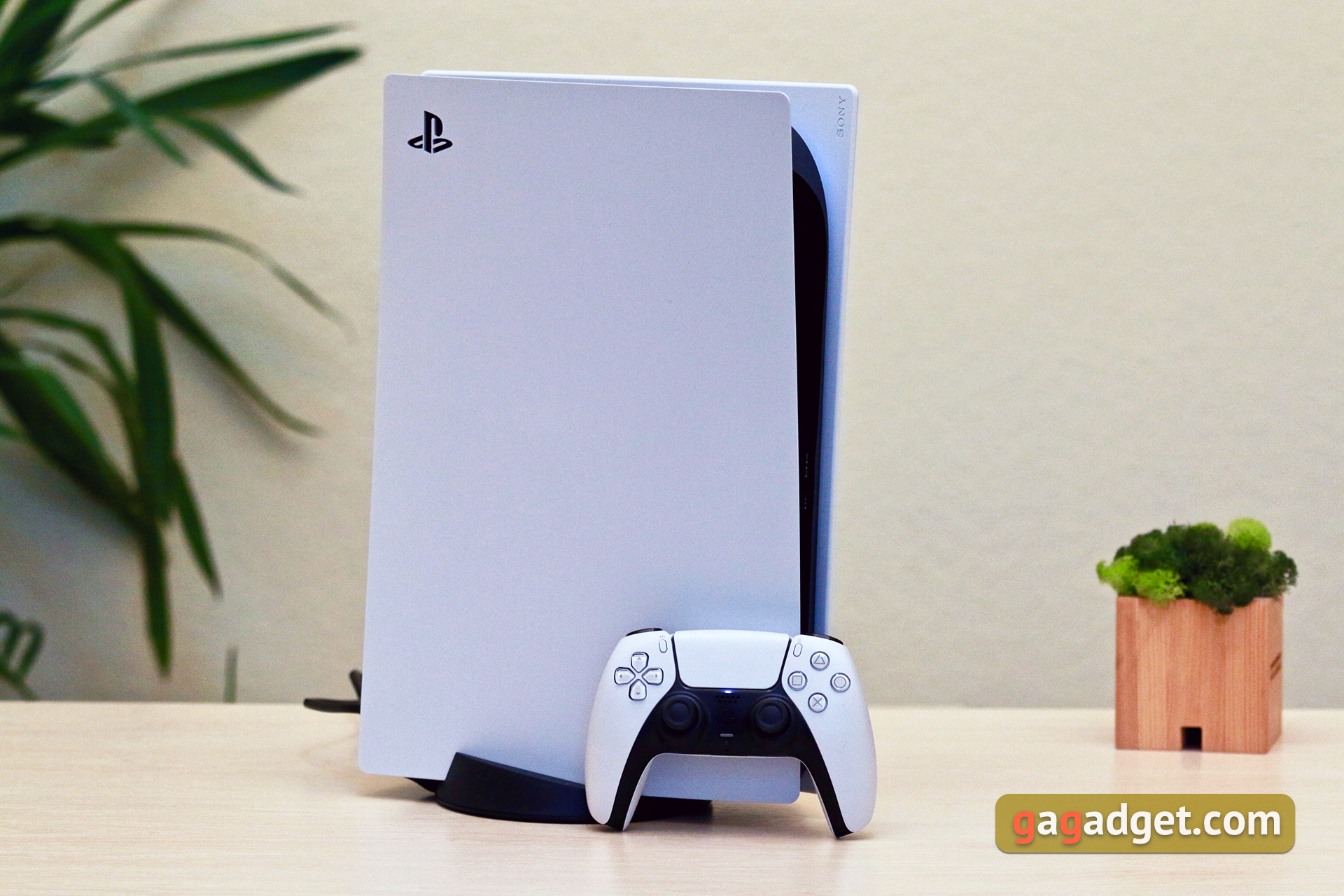
One of the charms of game consoles is that you turn it on and play, and what's inside is not important. But still we have to say a few words about the PlayStation 5's hardware. As in the last generation, the company has decided to use solutions AMD. In this case it is a 7nm AMD Ryzen Zen 2 based custom solution with eight cores and dynamic clock speed up to 3.5GHz. Graphics - also custom solution based on RDNA 2 architecture, 36 CU, up to 2.23 GHz, 10.28 Tflops, there is support for ray tracing. It uses AMD SmartShift technology for dynamic CPU and GPU frequency control. The point is that the power consumption is dynamically distributed between the CPU and GPU depending on current tasks, this distribution is entrusted to the games themselves. The memory capacity of the console is 16 GB GDDR6, with a bandwidth of 448 GB/s.
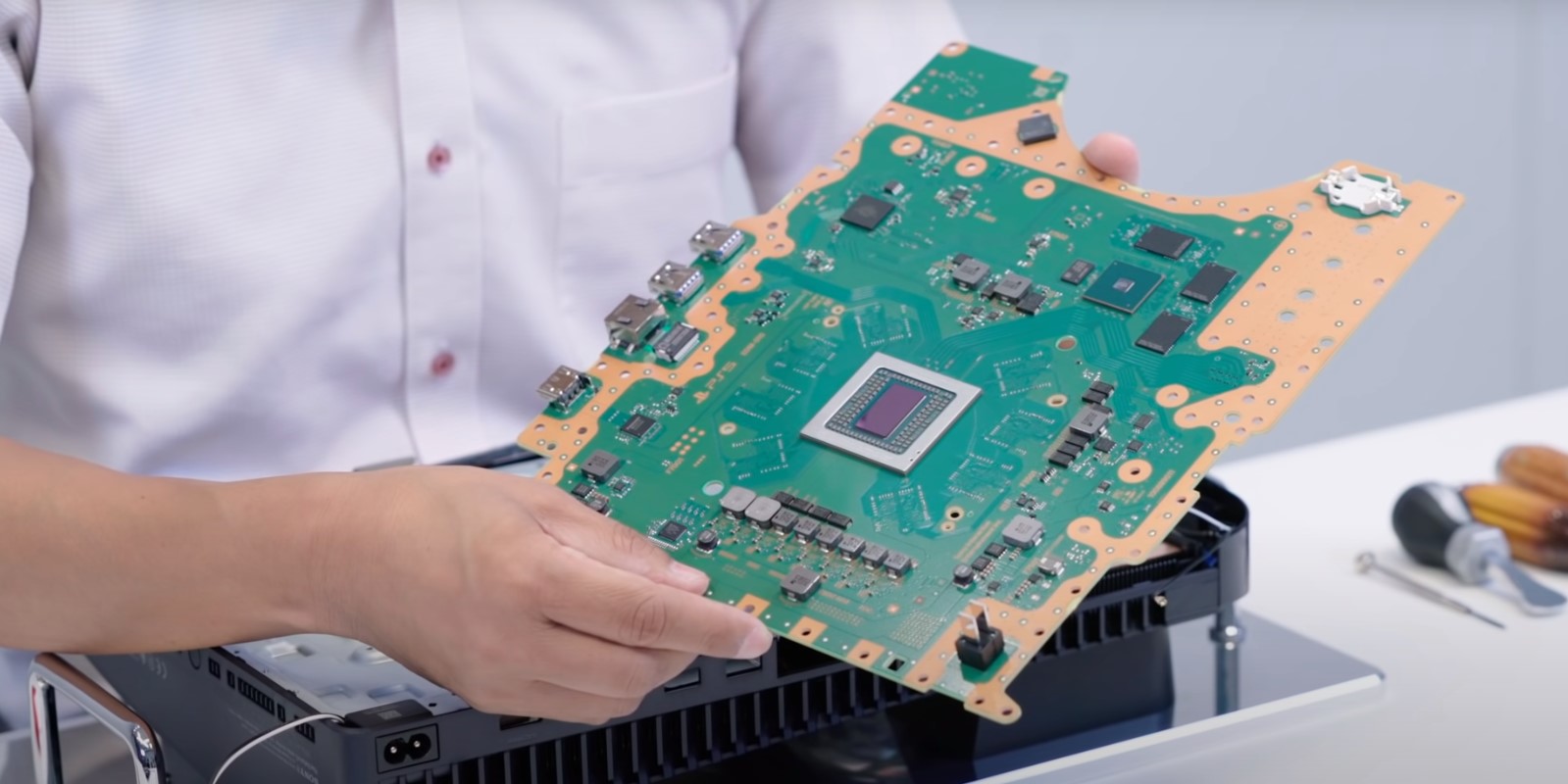
Another important feature of the PlayStation 5 is the SSD storage, which made it possible to minimize (and in some cases even eliminate) the loading screens as such. The console uses a PCIe 4.0x4 NVMe drive with its own custom controller. This allowed speeds of 5.5 GB/s with uncompressed data and up to 9 GB/s with compression. In addition to trivial acceleration of downloads, this speed can be used in new games, especially - in projects with an open world, where previously we had to resort to tricks such as tunnels or narrow passages, while overcoming which just loaded the next part of the world.
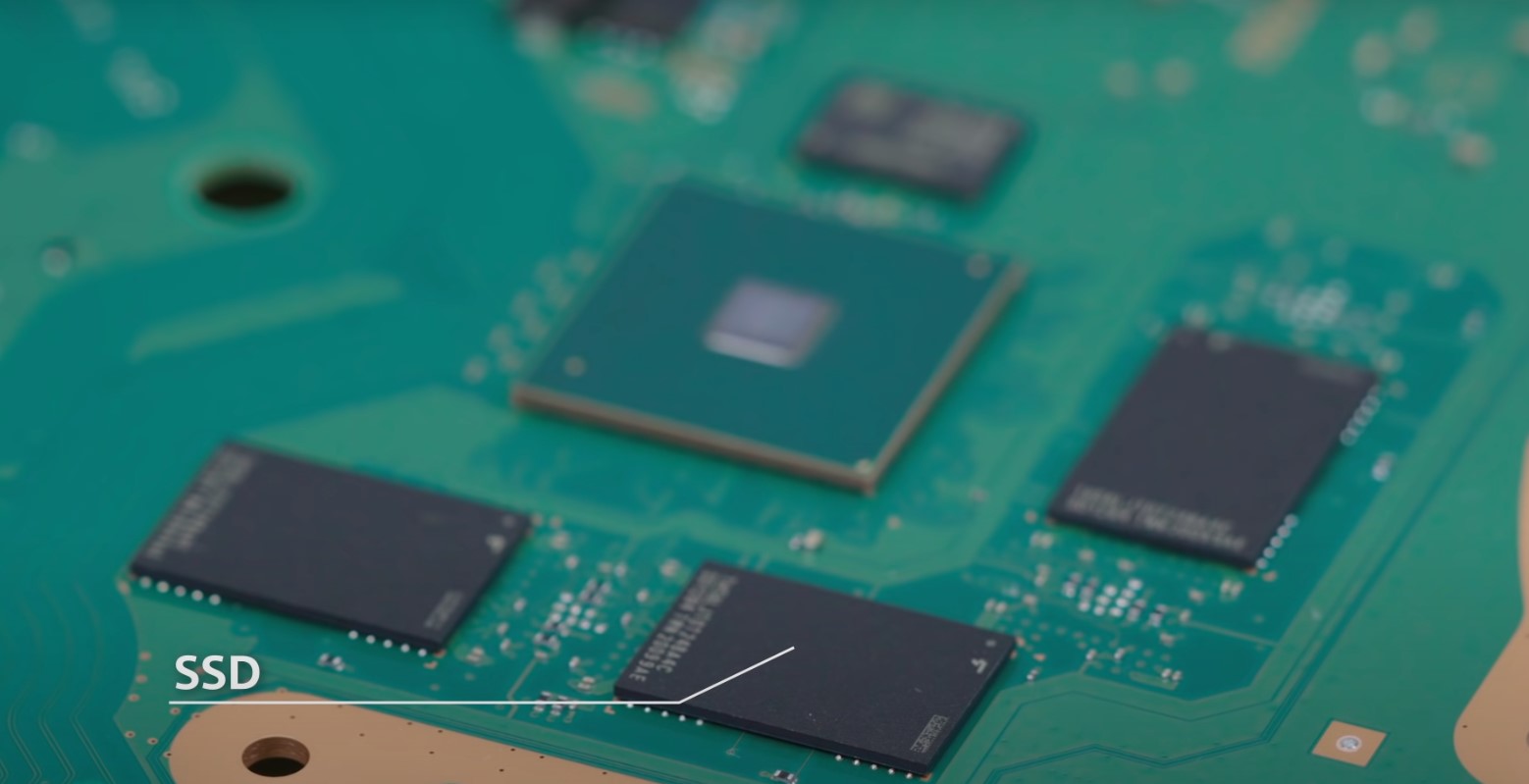
But there is a downside of this solution: SSD is soldered on the board and in case of failure, it is very likely that the service will have to change the entire motherboard (actually the entire console). And the second, temporary difficulty is memory expansion: there is an M.2 slot with PCIe 4.0 support, but you can't use it yet. Sony asks you to wait a bit with this for two reasons. Firstly, there are very few drives with suitable speeds. Only two models come to mind: WD Black SN850 and Samsung SSD 980 PRO, which have read speeds of up to 7000 MB/s. The second point is that Sony's custom solution has six priority levels, while NVMe has two. Only 667 GB of memory is available to the user (with a total capacity of 825 GB), which is not much by today's standards, considering that large projects are more than 100 GB in size. On the other hand, only PS5 games need to be installed on the internal drive. Games for the PS4 have no problem installing and working from external drives. So you don't have to fill up the internal storage with your library from the last console.
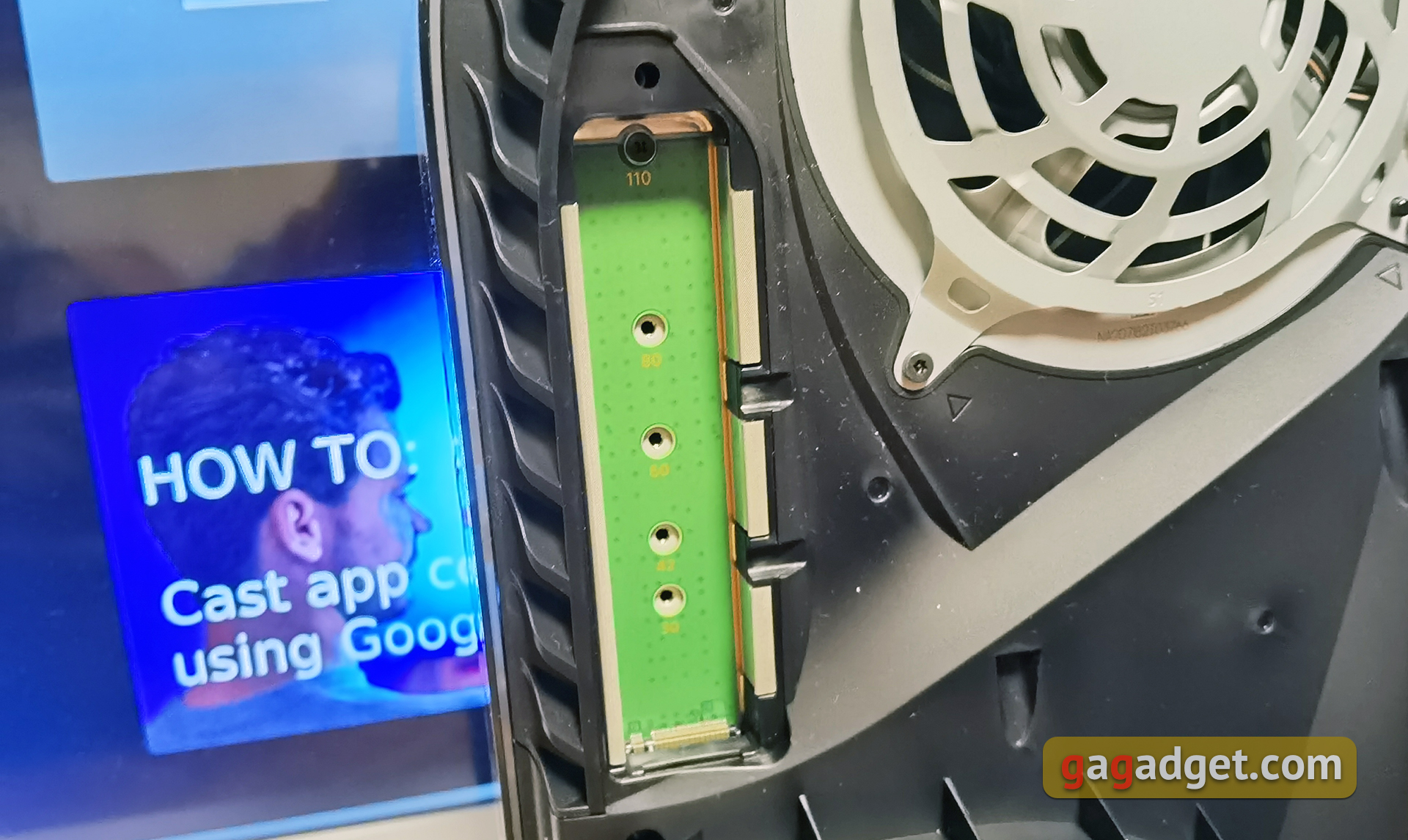
The PlayStation 5 is capable of displaying images in 720p, 1080i, 1080p and 2160p resolutions, there is HDR support. Connecting to an 8K TV is also possible, but 8K content playback is coming with future updates. Native support for 1440p is not yet available, although a number of monitors with this resolution work with the console: the console simply outputs FullHD or 4K, and the monitor upscales or compresses the resolution to the desired one. Although Sony assures that if there is demand, support for 1440p will appear with future updates.

In terms of ports and communication capabilities, the set is as follows: 2xUSB Type-A 3.1 on the back, 1xUSB 2.0 (probably just for charging the gamepad), 1xUSB 3.1 Type-C, HDMI 2.1 with support for 4K 120Hz output and Gigabit Ethernet. In general, the set is sufficient. Perhaps, for complete happiness, the owners of expensive acoustics will not only have enough optical audio output. Or a receiver supporting HDMI 2.1. Blietooth 5.1 is used to connect gamepads. And for wireless connection to the network, a dual-band Wi-Fi module with support for the relatively new standard IEEE 802.11ax (Wi-Fi 6) is provided, which allows you to get very high data transfer rates. In order not to limit ourselves in speed, we used the PlayStation 5 with a gaming router ASUS RT-AX86U, from ASUS. In fact, the speed "over the air" was steadily about 650-700 Mbit / s when loading and more than 300 on the output.
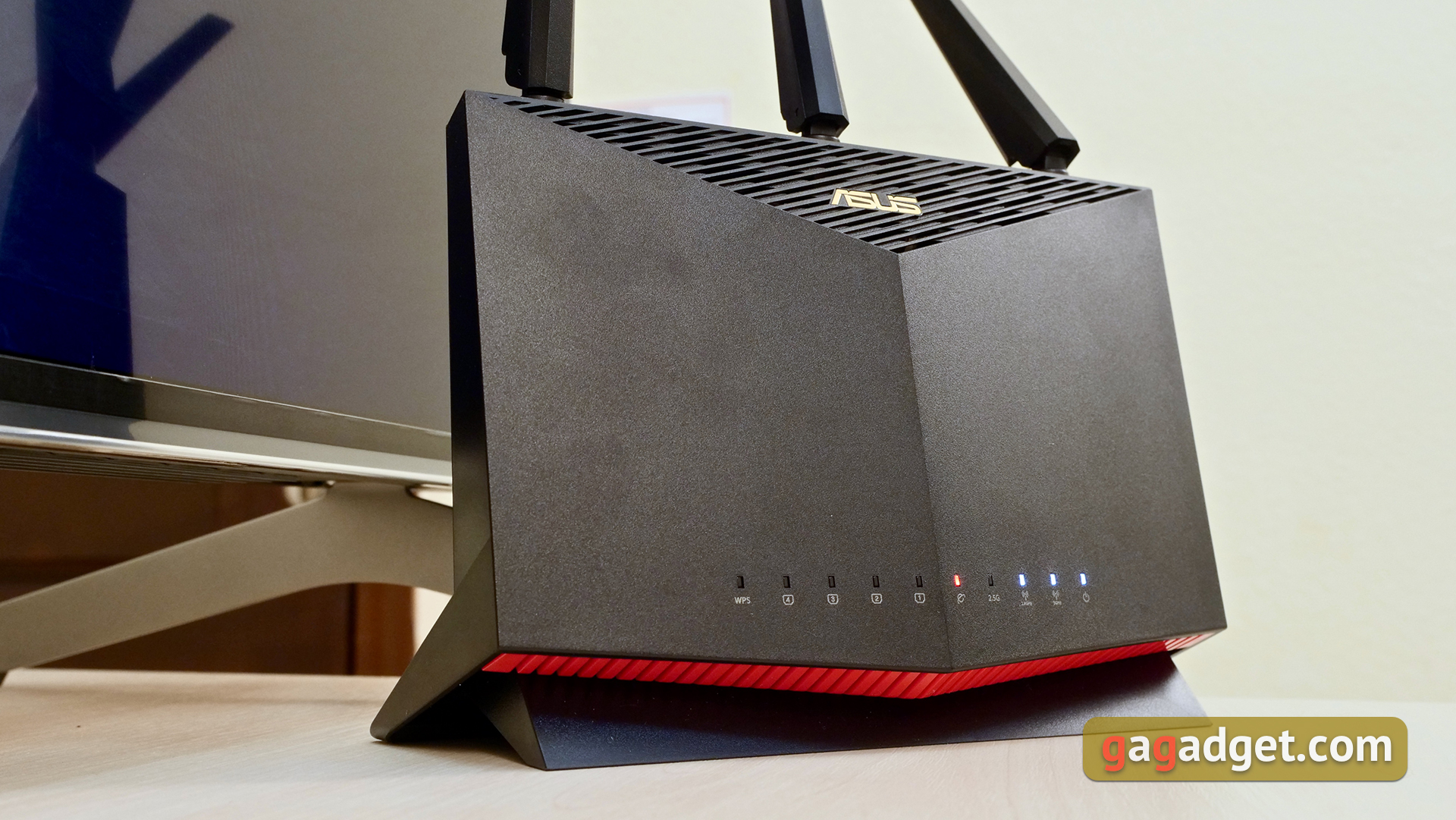
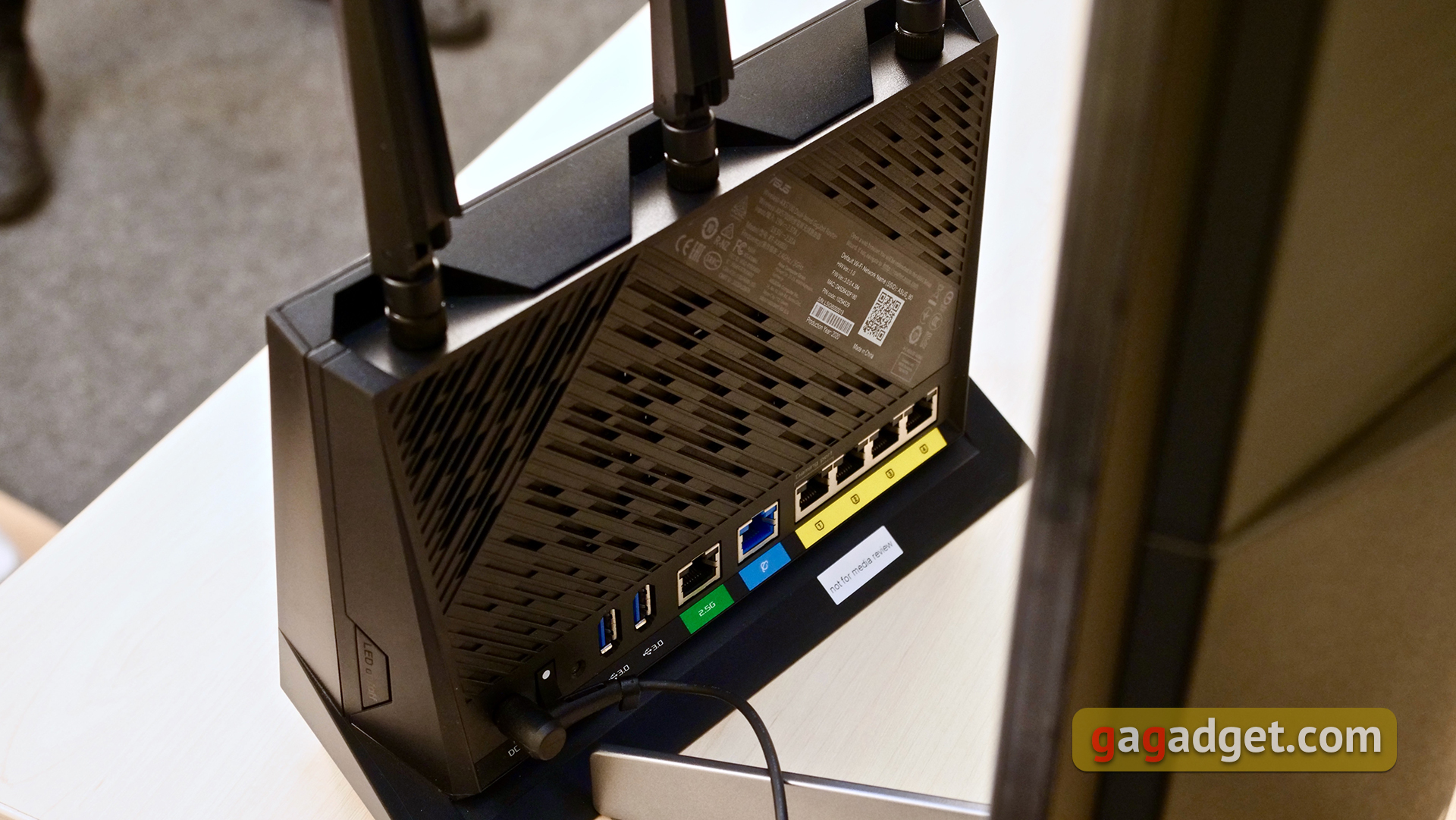
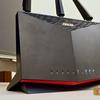
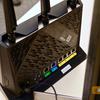
New Interface Features
The PlayStation 5 interface has been redesigned extensively, although you can feel the similarity. But most importantly, it is much faster and the PS Store is integrated rather than installed as a separate application. The interface is rendered in 4K 60 frames per second with HDR (when connected to the appropriate TV). During the time I've used it, there has never been any slowdowns or hesitation. When first setting up, the console prompts you to make basic settings, including region, language, connect to the network, install the desired multimedia applications (Netflix, YouTube, Amazon Prime, and so on) and create a profile or log in to an existing one. You don't have to fully enter your information to do this. You can use a smartphone with the updated PS App installed. You just need to scan the QR code.
After these simple manipulations, go to the main screen. Its main part is divided into two tabs: games and multimedia. The last paragraph displays the above streaming services, and the first one contains 10 icons with the latest games and the PS Store. Now this list is not in the center of the screen, as in PS4, but closer to the upper left corner, and the icons themselves have become smaller. When you select a game, the cover is displayed on the full screen and the corresponding music is played, the trophies earned, the launch button and a button with additional functions are displayed on the screen, including information about the game, going to the PS Store for possible purchase of add-ons, and so on. With this general design, there is no extreme need for themes. Although I think that after all they will appear in future updates and it will be possible to change, for example, the general color scheme.
Scrolling below you can see videos and other materials on the game, as well as so-called cards. The company emphasized them in demonstrations of the interface. The point is that the cards show the current or available tasks or stages in a particular game and allow you to start the game directly from the desired location. Additional data that can be displayed includes the approximate time it will take to complete the task, the rewards and experience the player will receive after completion, and, most interestingly, videos with tips on how to get through. As far as I remember, this feature is only available to those who have an active PS Plus subscription. The trick is really cool, but the question remains how much the developers of the multi-platform will bother with this kind of additional content.
Returning to the main interface, it is worth saying that everything looks logical and simple, but a couple of things do not seem very convenient. First - a limited number of icons. That is, if you have installed a couple dozen games, they will not all be displayed. For them it is necessary to go to the library, which is at the end of the list. The library itself is divided into three tabs: the entire collection, downloaded (yes, it comes second) and PS Plus. By the way, the library has a useful little thing: games for PS4, which work on backward compatibility, indicated by the appropriate icon. And the second thing I'm not very happy about is the lack of folders. On the PS4 I have all the local co-op games and PlayLink games in separate folders. There are an impressive number of both. There is hope that the folders will return in future updates.
A few words about the PS Store. As already written above, it is integrated and works very quickly, and the transition between it and the game library is not noticeable at all. It is worth noting that it has such an indispensable thing as a wish list. It is not in the updated web version and app, but there is hope that with updates it will return. Regarding the difficulty of transitioning between generations: a number of games already have versions for both PS5 and PS4. Paid or free upgrade is up to the publisher of the particular game. For example, if you have Watch Dogs Legion for PS4, the PS5 version is "purchased" in the store for $0 and then installed on the console. In any case, you should look carefully when buying and installing. In some cases you can install two versions at once. In one case it worked for me: PS5 version of Mortal Kombat 11 works only with DualSense (which is available only one), while the version for the previous generation also works with DualShock 4, which made it possible to play with friends.
The PlayStation 5 interface has a panel called "Control Center" for all basic functions, which is opened by clicking on the PlayStation button. A panel appears at the bottom of the screen. From it you can go to the home screen, there is a switch between the last launched games, a notification panel, a list of chats (hangouts) and friends online, music streaming, network connection settings, sound and microphone settings, the controller and a menu to turn off the console or go to sleep mode. The contents of the Control Center can be customized.
There are three buttons in the upper right corner of the main screen. Search through the store, profile settings (network status, prizes, etc.) and switch to full settings. The settings menu is large, there is everything you may need. Starting from the standard settings for picture output, audio, software update, network settings, language, parental control, PS Plus cloud storage backup (PS5 and PS4 separately), parental control, sharing and finishing with some unusual items. For example, it's now possible to reassign gamepad buttons and swap sticks. There is also such a thing as common preferences for all games. You can set the desired overall difficulty and performance mode. Also we found an item "Spoiler Warnings". How this will work is still hard to say.
The branded apps PS App and Remote Play have been quite dramatically updated for the PlayStation 5 release. The PS App has become much more user-friendly and self-explanatory. It is divided into 5 main tabs: the first shows the last games played and friends that are currently online. The second tab is the official news feed, followed by the PS Store, library and search. You can initiate downloading new games right from your smartphone. Messages are also integrated into the app. As for Remote Play, it's simple and straightforward to use: it allows you to connect to PS5 and PS4. You can either use the virtual screen gamepad or connect your DualShock via Bluetooth.
Overall impressions of the updated PlayStation 5 interface are positive, it's very fast and easy to use. Although there are some minor issues that are likely to disappear with future updates.
What Games to Play? How does it Feel?
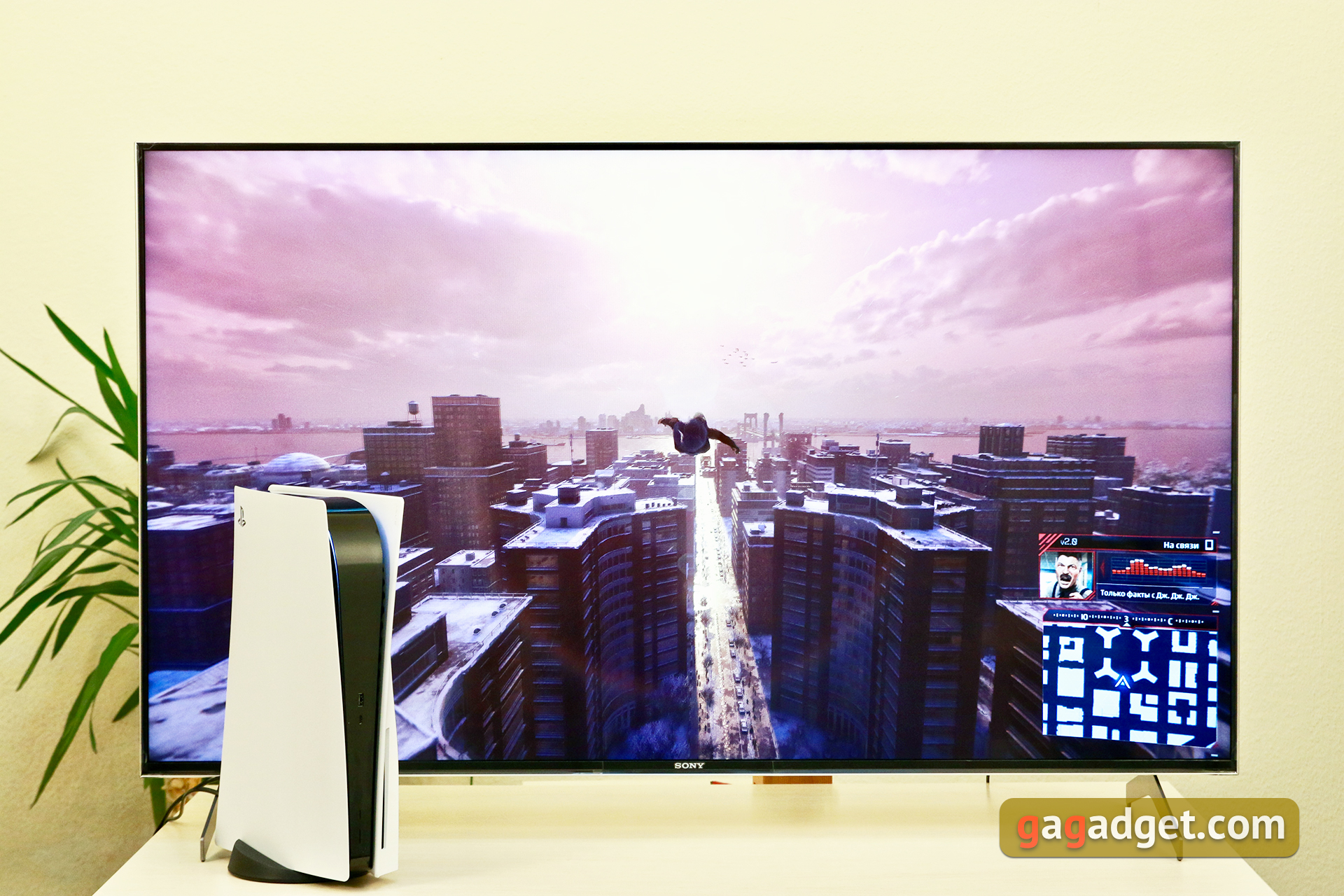
To test the console Sony kindly gave us one of their Ready for PS5 TVs, to be exact - Sony KD-55XH9096 model. It can output video in 4K resolution at 120 FPS (a relevant update has already been released). Although so far the number of games that support this frame rate is very small: updated Destiny 2, Devil May Cry 5 SE, DIRT 5, Borderlands 3 and Rainbow Six Siege. The TV has a special BRAVIA Game Mode, which activates the minimum delay 7.2 ms, supports virtual surround sound S-Force Front Surround, automatic detection and transition to the game mode when you connect a console to the TV. In fact, the picture on this TV with PlayStation 5 is really great. The TV itself has 4K resolution, Full Array LED backlighting (with local dimming and uniform backlighting) and a full set of Sony proprietary technologies: TRILUMINOS display, Live Colour, X-tended Dynamic Range contrast enhancement and supports HDR10, HLG and Dolby Vision standards. It runs on the Android TV platform. As for the sound, as for the built-in acoustics sounds very impressive. The volume range is sufficient.
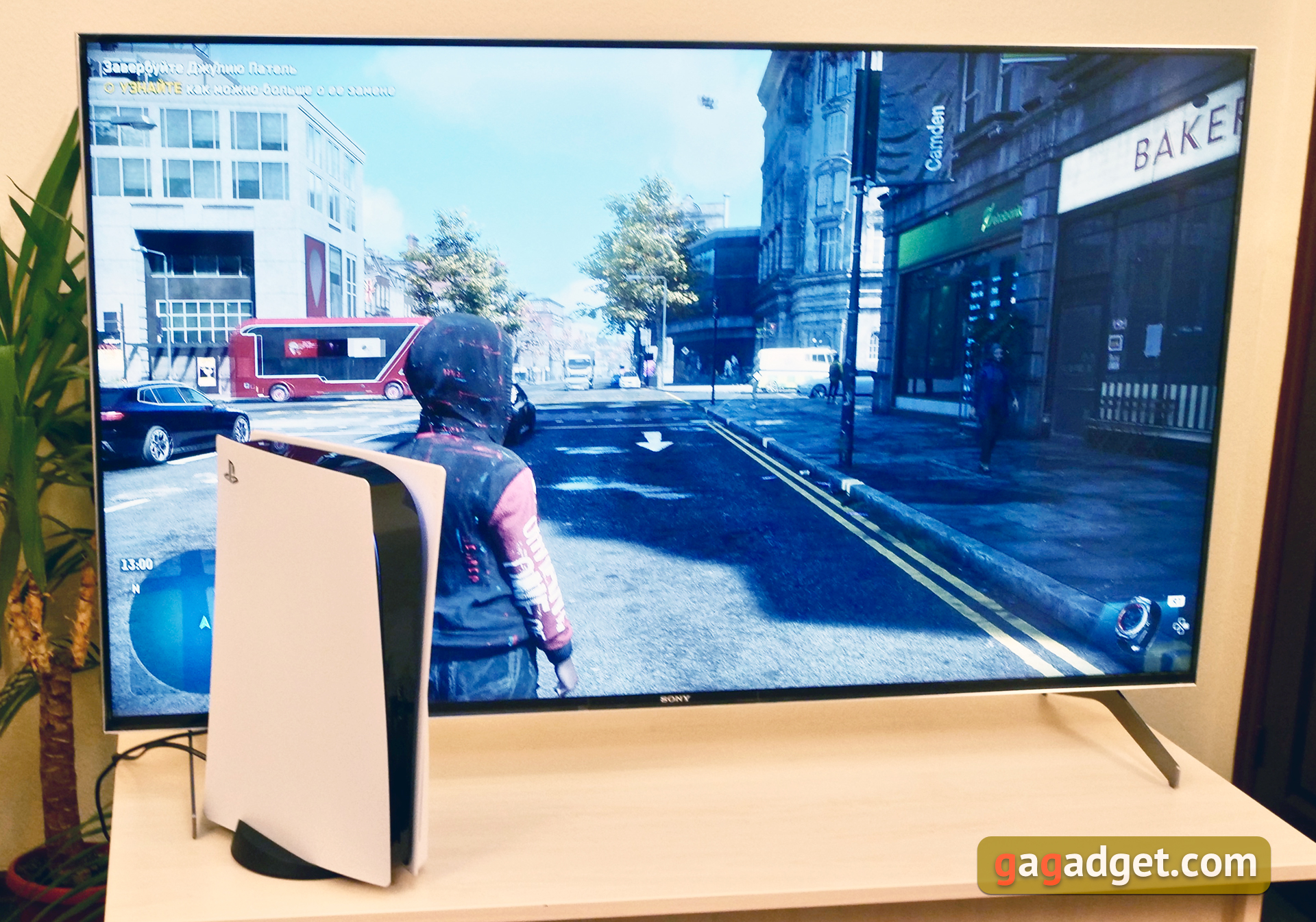
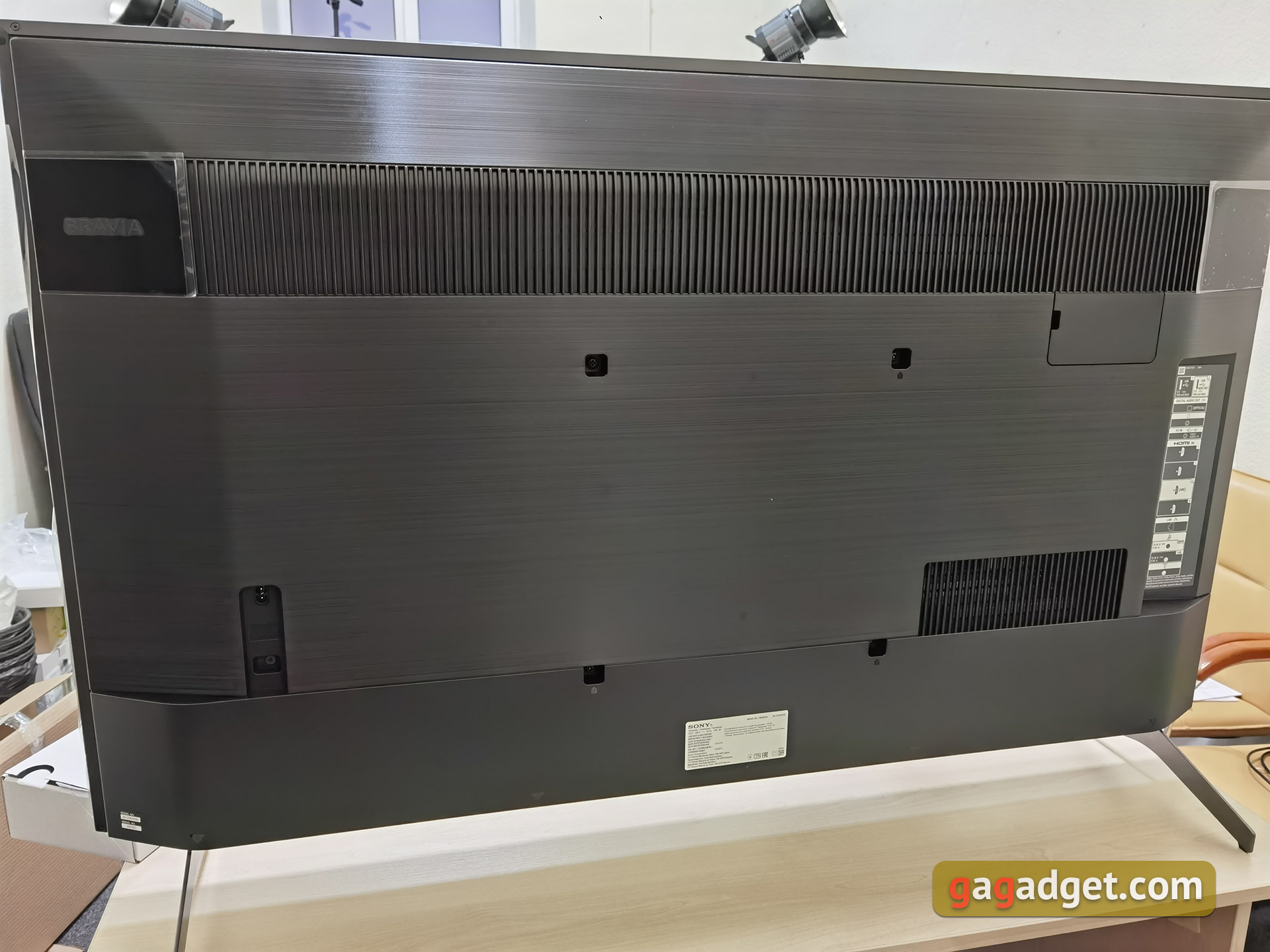
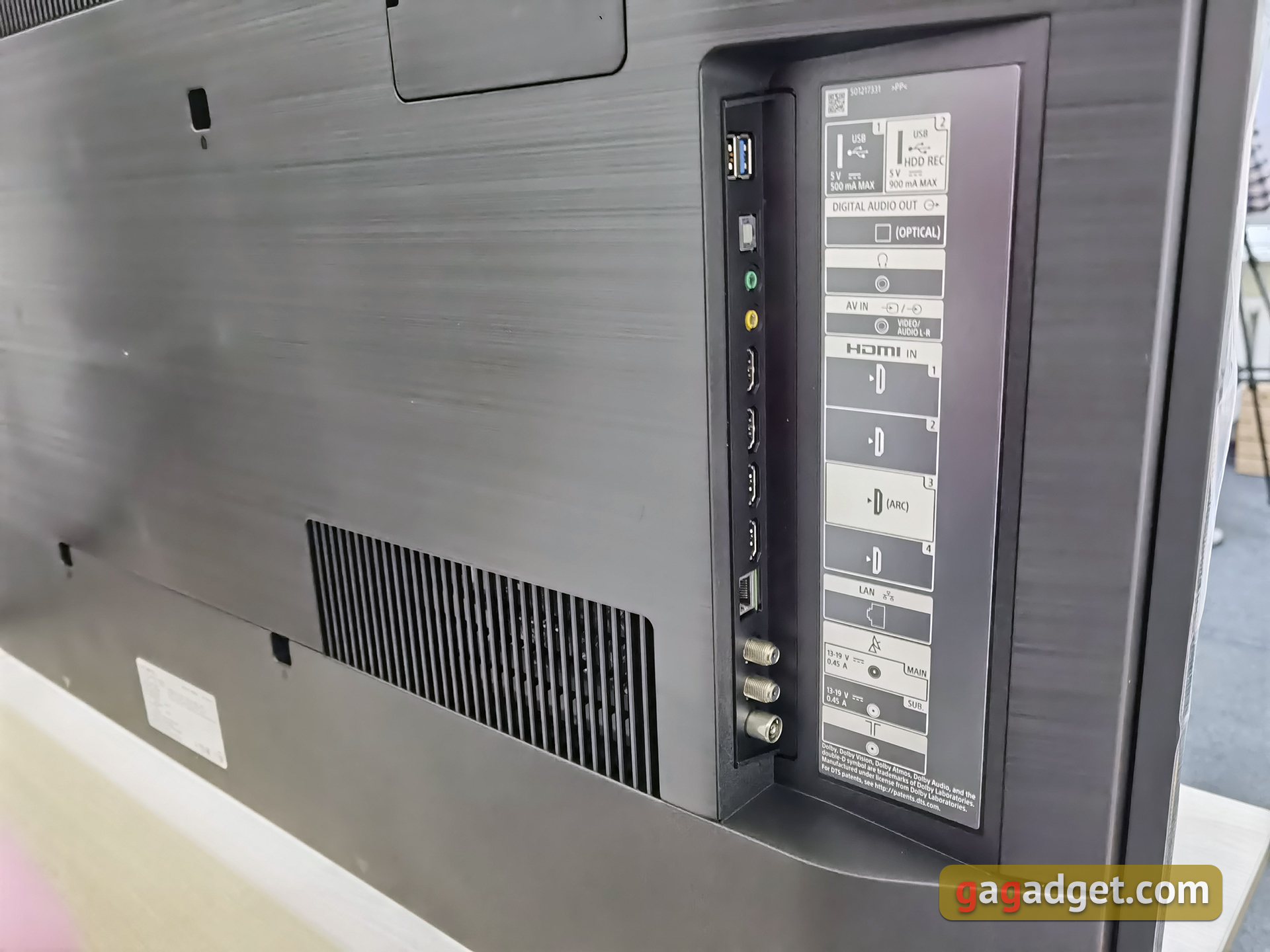


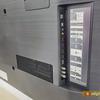
As for games and how they feel, it's immediately worth appreciating Demon's Souls, Marvel's Spider-Man: Miles Morales (and Marvel's Spider-Man: Remastered), and Sackboy: A Big Adventure, which are the launch exclusives of PS5. The leap in graphics compared to PS4 is very impressive and can be seen with the naked eye. This is especially evident when comparing Marvel's Spider-Man and its updated version or different Watch Dogs Legion. Not only the beauty of 4K and ray tracing are very pleasing, but also the available 60 fps mode, with which it is really much more enjoyable and comfortable to play. Of course, it is not in all games: Watch Dogs Legion goes in 4K 30 fps with ray tracing, but Demon's Souls, Cyberpunk 2077 and Marvel's Spider-Man: Miles Morales with 60 fps play very briskly. By the way, Marvel's Spider-Man: Miles Morales already has 3 modes: 4K with raytracing 30 fps, 4K and 60 fps, but without raytracing and 60 fps with raytracing, but with reduced resolution. It is not mentioned how much, but even if you look closely at the picture, there are no crucial artifacts and mosaicism.
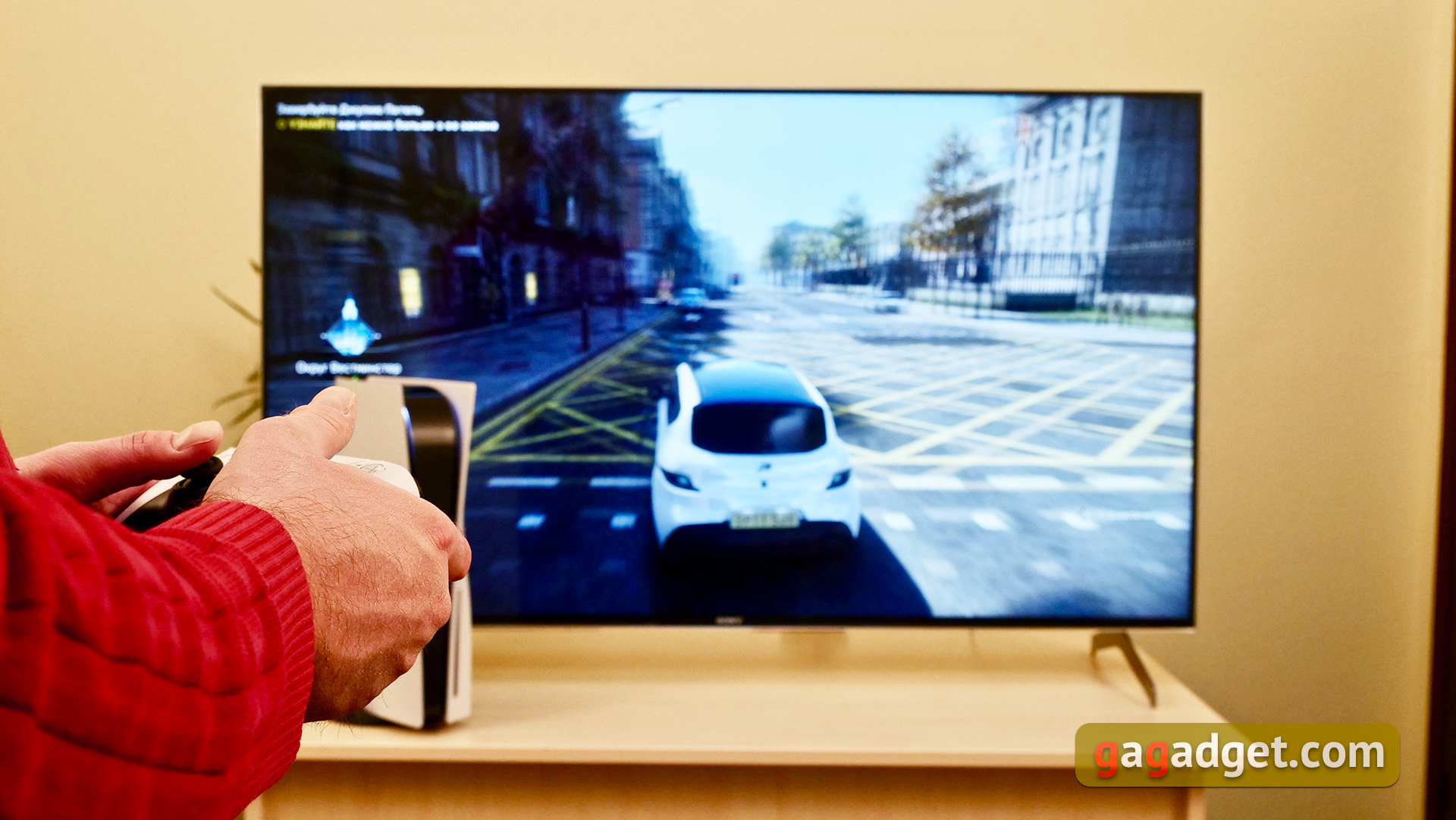
By the way, the developers of Marvel's Spider-Man: Miles Morales boasted that they got rid of the PlayStation 5 loading screens. And so it is: no loading during transitions between the city and indoor locations, and the game itself starts up in about 18 seconds. From hitting the X to the gameplay itself (through two developer splash screens and the main menu). In Demon's Souls it's just under 20 seconds, Astro's Playroom from launch to the "CPU Palace" hub is just over 20 seconds. There is a tangible increase in multiplatform: loading a saved game in Watch Dogs Legion (from the "Continue" button to London) takes about 10 seconds. The PlayStation 5 itself takes about 23 seconds to load.












Backwards Compatibility games also load significantly faster than on the last generation, although they certainly don't show such outstanding results. Days Gone, for example, takes about a minute to load (from launch to gameplay). On PS4 it took almost 3 minutes. If we talk about backward compatibility, almost all games of the last generation run. Sony previously published a list of 10 games that don't launch, but a couple of them have already received a patch and that list has shrunk. It's hard to say for sure, but the games I launched ran without any problems, including relatively recent games like Ghost of Tsushima, Days Gone, THPS 1+2, as well as "smaller" games like Overcooked, Broforce, Huntdown. At the same time, these games work perfectly with DualSense and DualShock 4. Playing with three friends in some Broforce game with a collection of gamepads of different generations is not a problem at all.










Some backwards compatibility games got 60 fps and/or graphics upgrades. Among them: Ghost of Tsushima, Days Gone (both play just fine at 60 fps), Sekiro: Shadows Die Twice, Dark Souls III, HITMAN 2, The Evil Within 2, Rise of the Tomb Raider, Shadow of the Tomb Raider, Killzone: Shadow Fall and so on. So owners of an extensive library of games from the PS4 will have something to play. And for those who will have the first gaming console there is the so called "PS Plus Collection", that includes 20 games (exclusives multiplatform) which are available to all PS5 owners with an active PS Plus subscription. The list: Bloodborne, Days Gone, Detroit: Become Human, God of War, inFamous: Second Son, Ratchet and Clank, The Last Guardian, The Last of Us Remastered, Until Dawn, Uncharted 4: A Thief's End, Batman: Arkham Knight, Battlefield 1, Call of Duty: Black Ops III (Zombies Chronicles Edition), Crash Bandicoot N. Sane Trilogy, Fallout 4, Final Fantasy XV Royal Edition, Monster Hunter: World, Mortal Kombat X, Persona 5, Resident Evil 7.
The Sound
A separate chip is responsible for the sound processing in PlayStation 5, which is able to accurately count hundreds of sound sources in games, down to raindrops. Thanks to this, the console is able to play virtual surround sound. The technology is called Tempest 3D AudioTech, and it works with any headphones, whether it's a standard model with 3.5mm jack, which is connected to the gamepad, or a gamer's headset, which is connected to the USB port. Although, of course, Sony recommends using the proprietary Pulse 3D headset. In the future, they promise that the technology will work with TV speakers as well. In fact, the implementation is similar to Dolby Atmos and other similar variations on the theme of virtual surround sound. When you connect headphones in the sound settings section of 3D sound becomes available, which has five profiles, of which offer to choose the most comfortable
In practice the implementation of the technology is very good, but it cannot be called revolutionary. Game sound sources are accurately positioned, virtual space is well perceived, and the overall impression of volume is created. But such solutions have been used in gamers' headsets and technologies like the aforementioned Dolby Atmos for a long time. There are several options for audio output in PlayStation 5: HDMI, 3.5mm jack on the DualSense gamepad, and USB for gaming headset connection. You won't be able to connect your headset via Bluetooth: Sony deliberately didn't add this option, linking it to the Bluetooth connection latency. But any wireless headsets with USB work without problems, including support for 3D audio. As for the microphone, you can use the built-in one on the DualSense or the headset. There is a sensitivity setting and switching between sources. In terms of quality, the microphone in the DualSense turned out to be quite good. In a quiet room it does quite well.
Cooling System and Noise Level
Sony has placed all the elements of the console on one board, including the processor, graphics chip, RAM modules, SSD and so on. For cooling there is a huge aluminum radiator with a copper base and heat pipes, which are comparable in efficiency with the evaporation chamber (according to Sony). Active cooling is the responsibility of a 120mm diameter and 45mm thick cooler. Holes between the central part of the console and the side panels are used to suck in the cool air. But the most unusual solution in the cooling system is the use of liquid metal as a thermal interface to cool the processor. Previously it was used mainly in custom assemblies, in serial production - only in top gaming laptops ASUS. Yasuhiro Otori, head of technical design department of PlayStation 5, explained that liquid metal is very effective as an interface and allowed to slightly reduce the cost of all other elements of the cooling system.
Liquid metal also has its own peculiarities, which make it somewhat difficult to use. First, it is a conductor, so it must be fully insulated to avoid leaks. For they can lead to a short circuit. Secondly, it interacts with aluminum and copper, which are used in radiators. As a result, to prevent corrosion, the copper block in contact with the processor is coated in silver. On the Internet there were a lot of comments with doubts about the appropriateness of using liquid metal. But no fools are working in Sony and, it seems to me, quite deliberately went for such a step. If we go back to the practical part of the question, the PlayStation 5 is very quiet. You can hear the noise of the coolant unless you put your ear close to it. In general, the console in normal use can be heard only during the optical drive. All the rest of the time you will not hear the PlayStation 5.
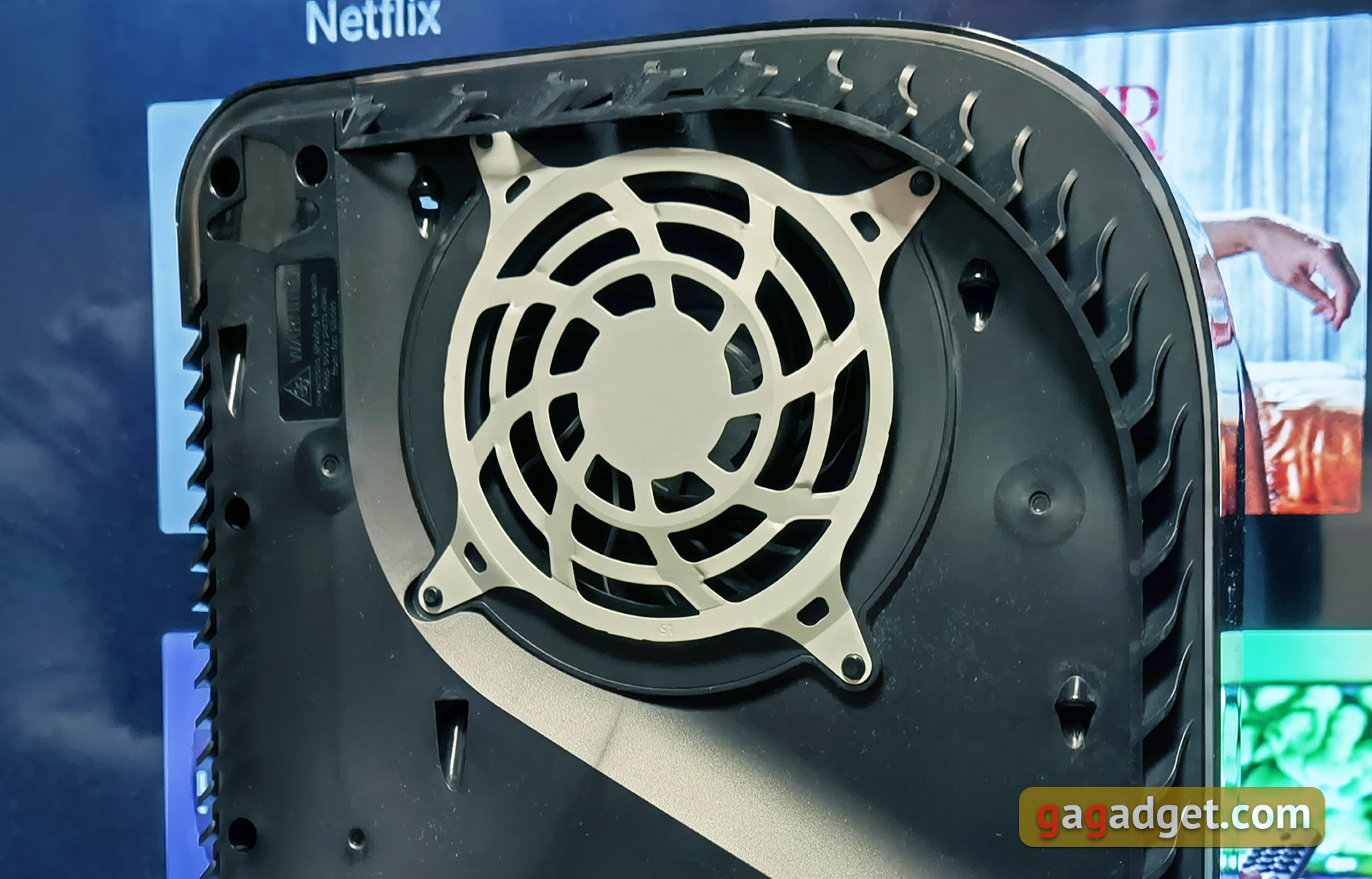
Of course, in less than 2 weeks of use, it's hard to say how the cooling system will behave after a year, let's say. Although this, too, depends greatly on a number of factors. Including how often you clean the room and how regularly you clean the console dust collectors. But so far so good, the temperature readings are within reasonable limits, even in the area directly blowing hot air. After about an hour of playing Demon's Souls Remake and the blowing point, the temperature was about 36°. Of course, this figure will vary significantly depending on the location of the console and the available air intake/blowout space:
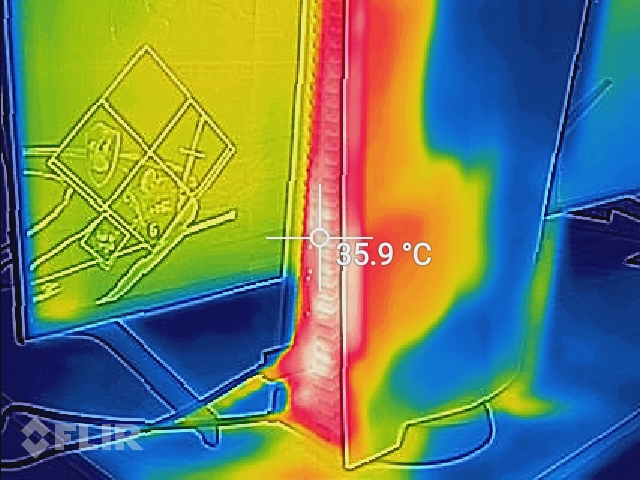

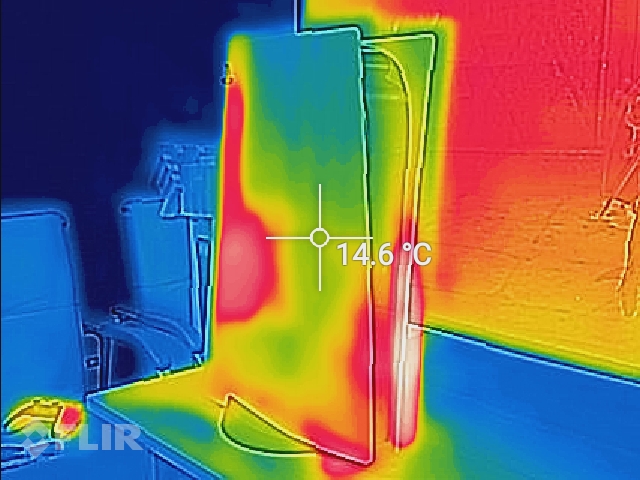
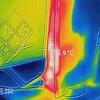

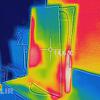
In the dry. Five things to know about the PlayStation 5:
- Displays games at up to 4K resolution, framerate up to 120 fps and supports real-time ray tracing
- Thanks to the ultra-fast custom SSD, game load times are kept to a minimum.
- PlayStation 5 supports almost all past generation games, some with improvements in the form of 60 fps.
- The new DualSense gamepad impresses with its tactile feedback and adaptive triggers.
- The console is big and it won't be easy to find space for it.
| PlayStation 5 specs | |
|---|---|
| CPU | AMD Zen 2, 7nm, 8 cores, 16 threads, up to 3.5GHz |
| GPU | GPU based on AMD RDNA 2, 36 blocks at up to 2230MHz, peak performance 10.3 Tflops, ray tracing support |
| Memory | 16 GDDR6, 256 bit bus |
| Memory bandwidth | 480 GB/s (full 16 GB capacity) |
| Image output | Games: up to 4K, up to 120 FPS, HDR support, video up to 8K |
| Storage | NVMe PCIe 4 SSD with custom controller 825 GB (soldered on board), up to 5.5GB/s (uncompressed data), up to 9GB (with compression), user available: 667 GB |
| Memory expansion | NVMe PCIe 4 SSD format M.2; external HDD and SSD (for PS4 games only) |
| Optical drive | 4K UHD Blu-ray |
| Sound | Tempest 3D AudioTech, support Dolby Digital, Dolby Digital Plus, Dolby TrueHD, DTS, DTS-HD High Resolution Audio, DTS-HD Master Audio |
| Communications | 1xUSB Type-C 3.1, 2xUSB Type-A 3.1, 1xUSB Type-A 2.0, 1xHDMI 2.1, Gigabit Ethernet, Wi-Fi 802.11 a/b/g/n/ac/ax, Bluetooth 5.1 |
| Dimensions | 10х4.3x15.3 inches (260x110x390 mm) |
| Weight | 10 pounds (4.5 kg) |
